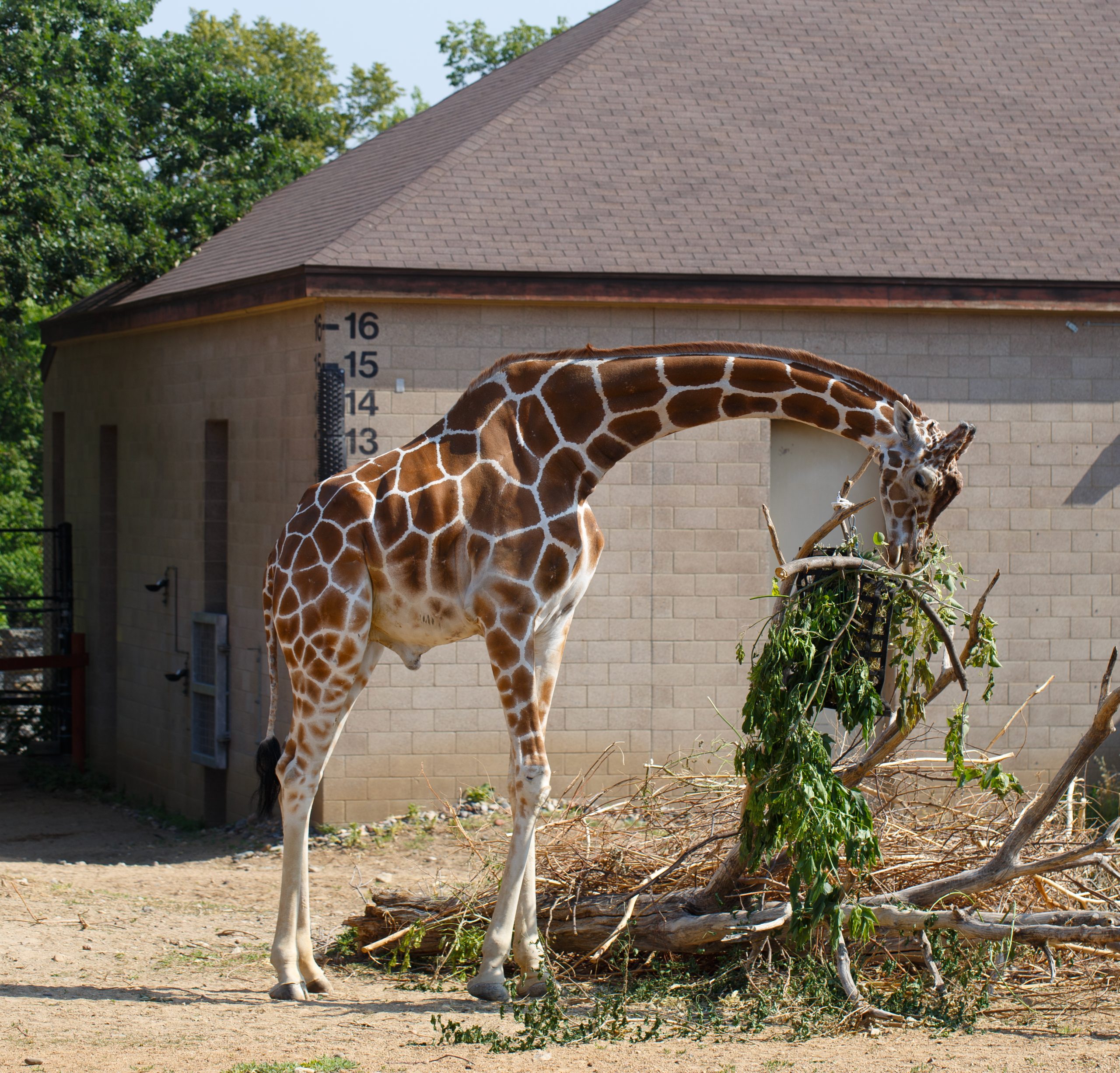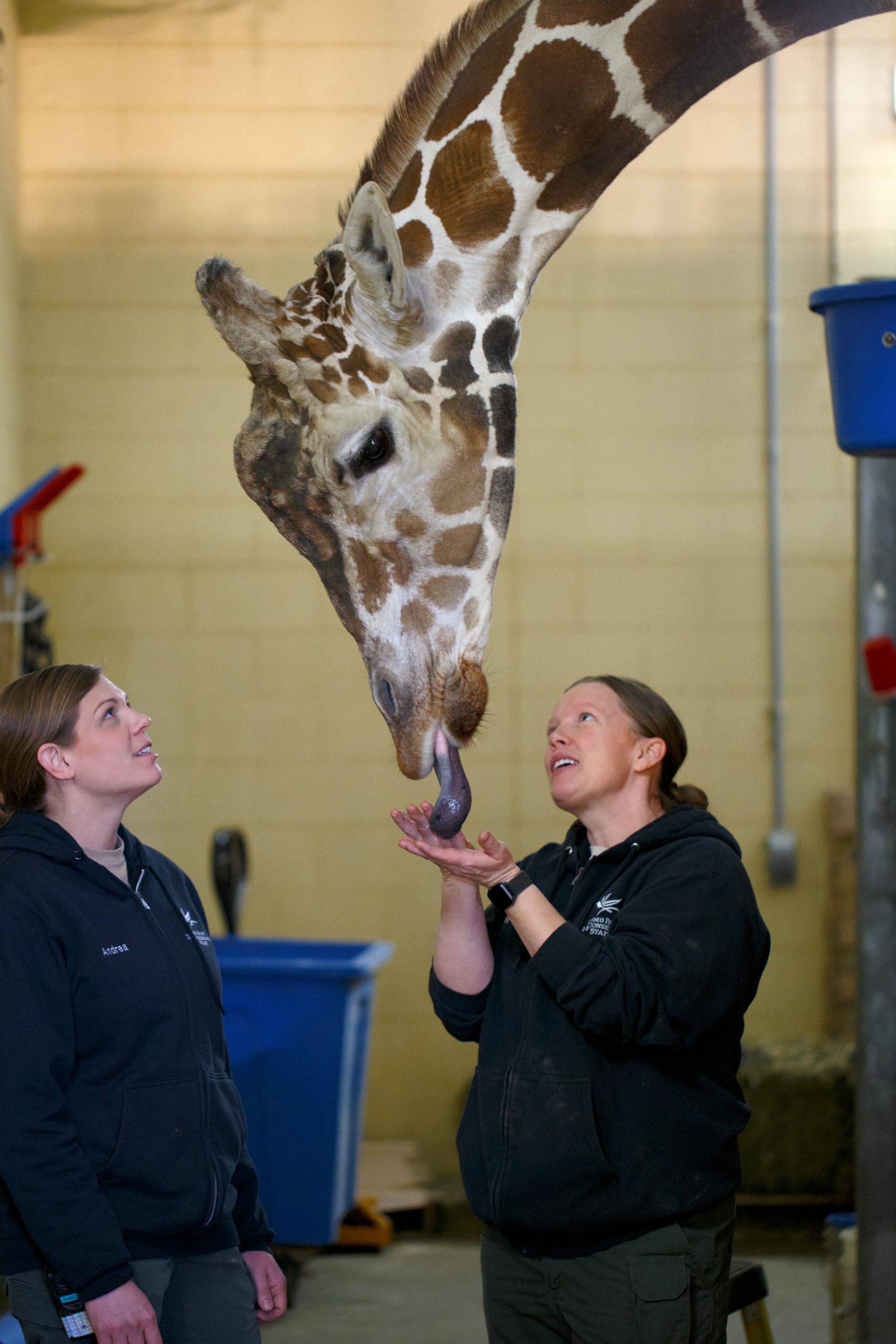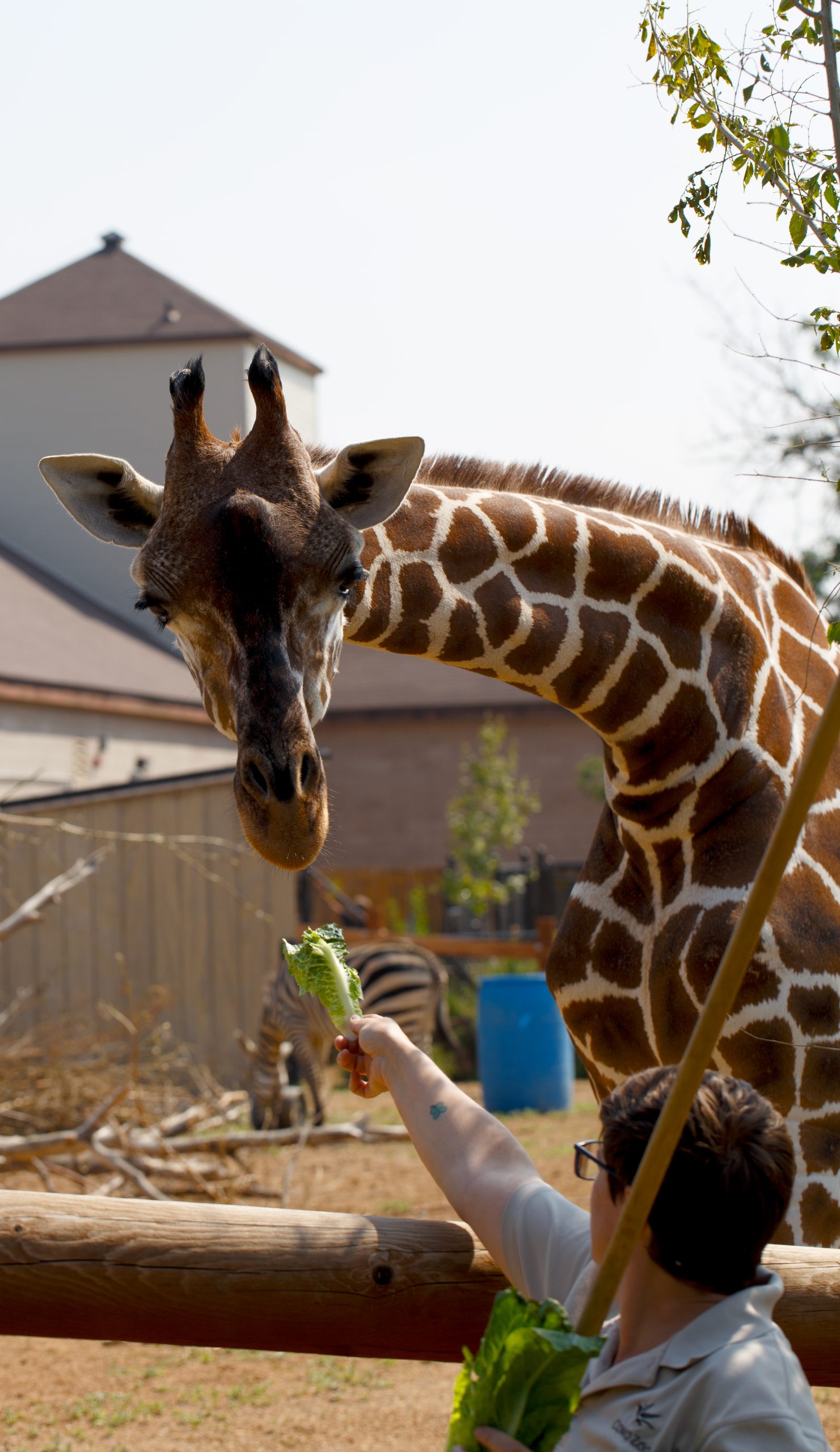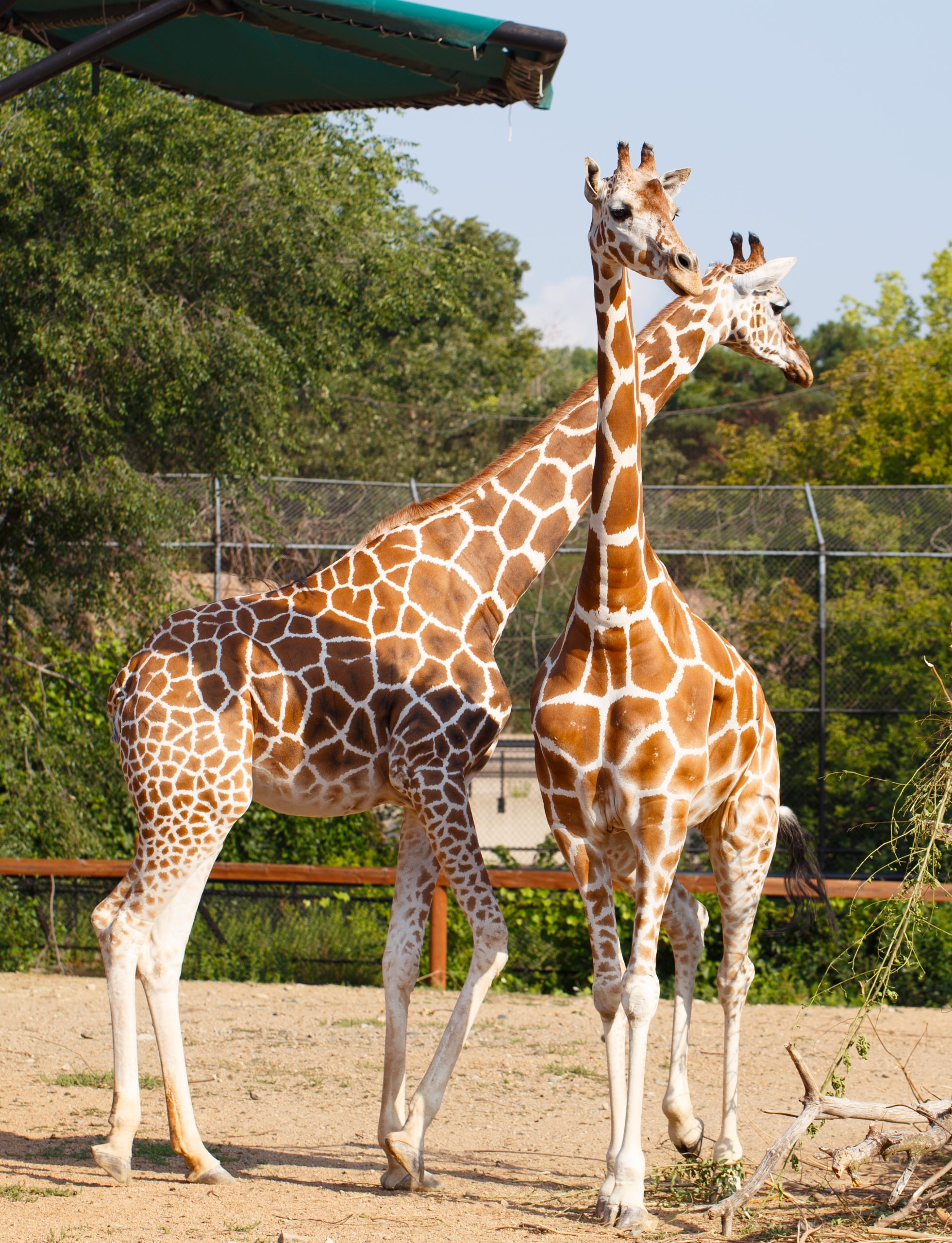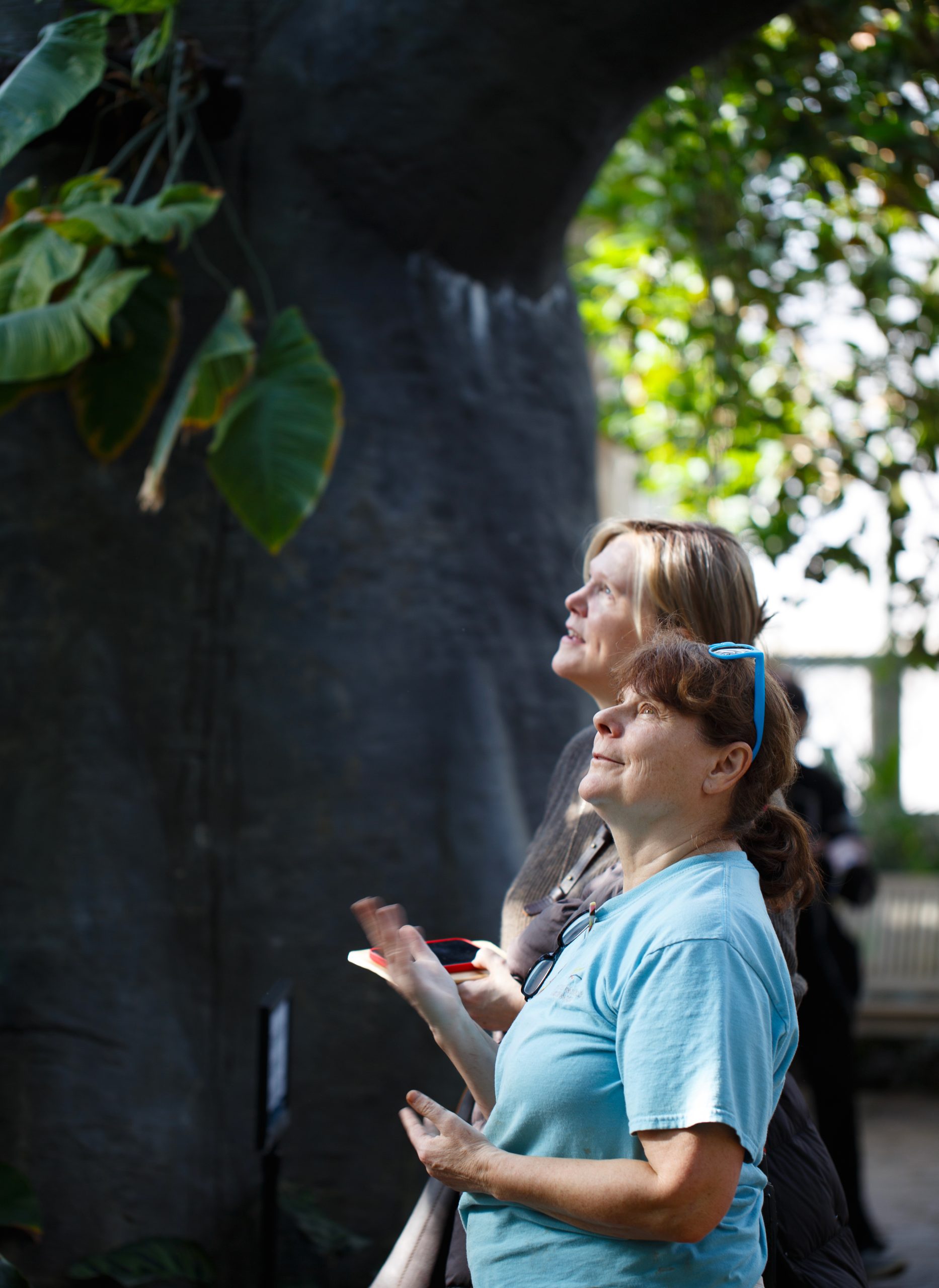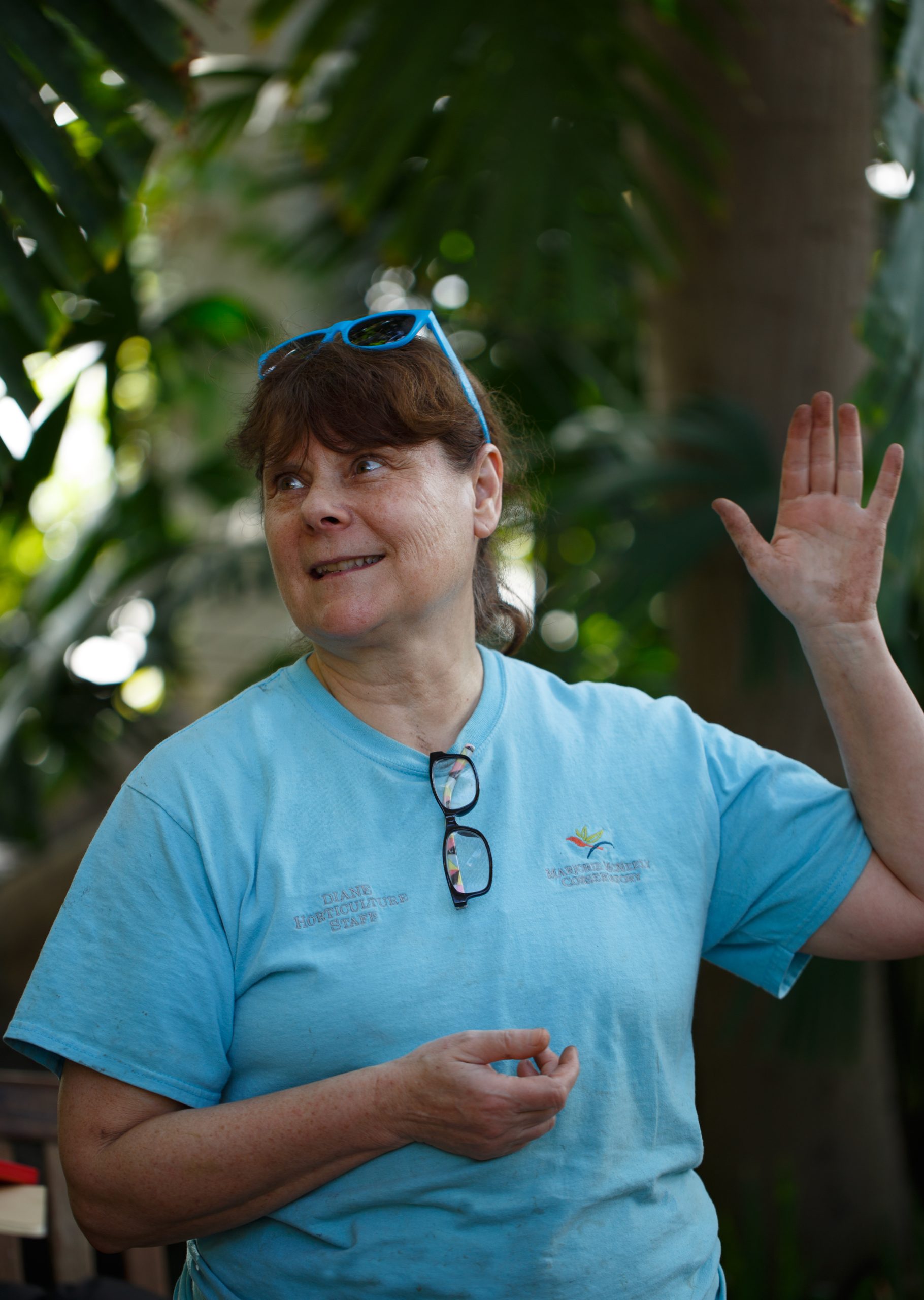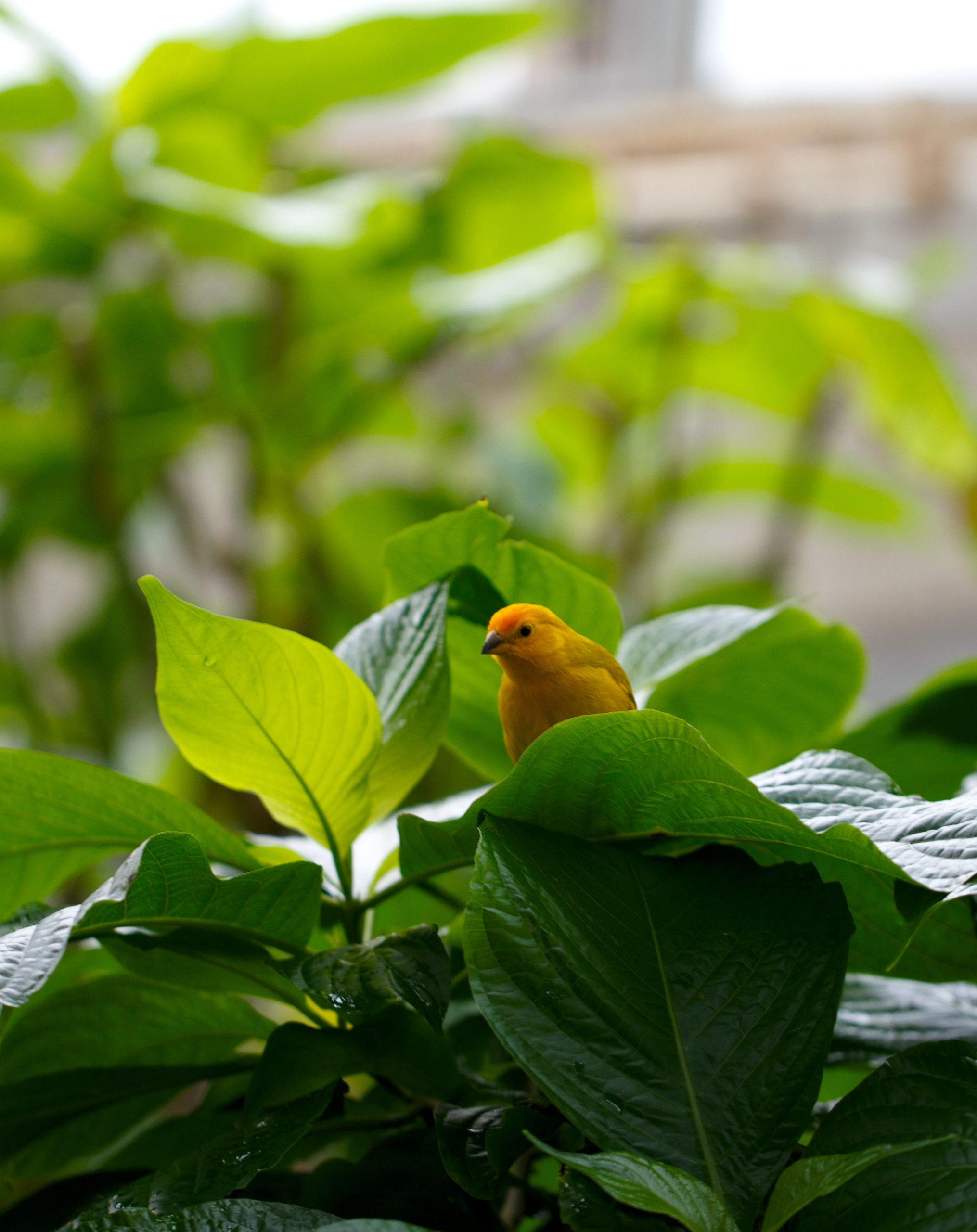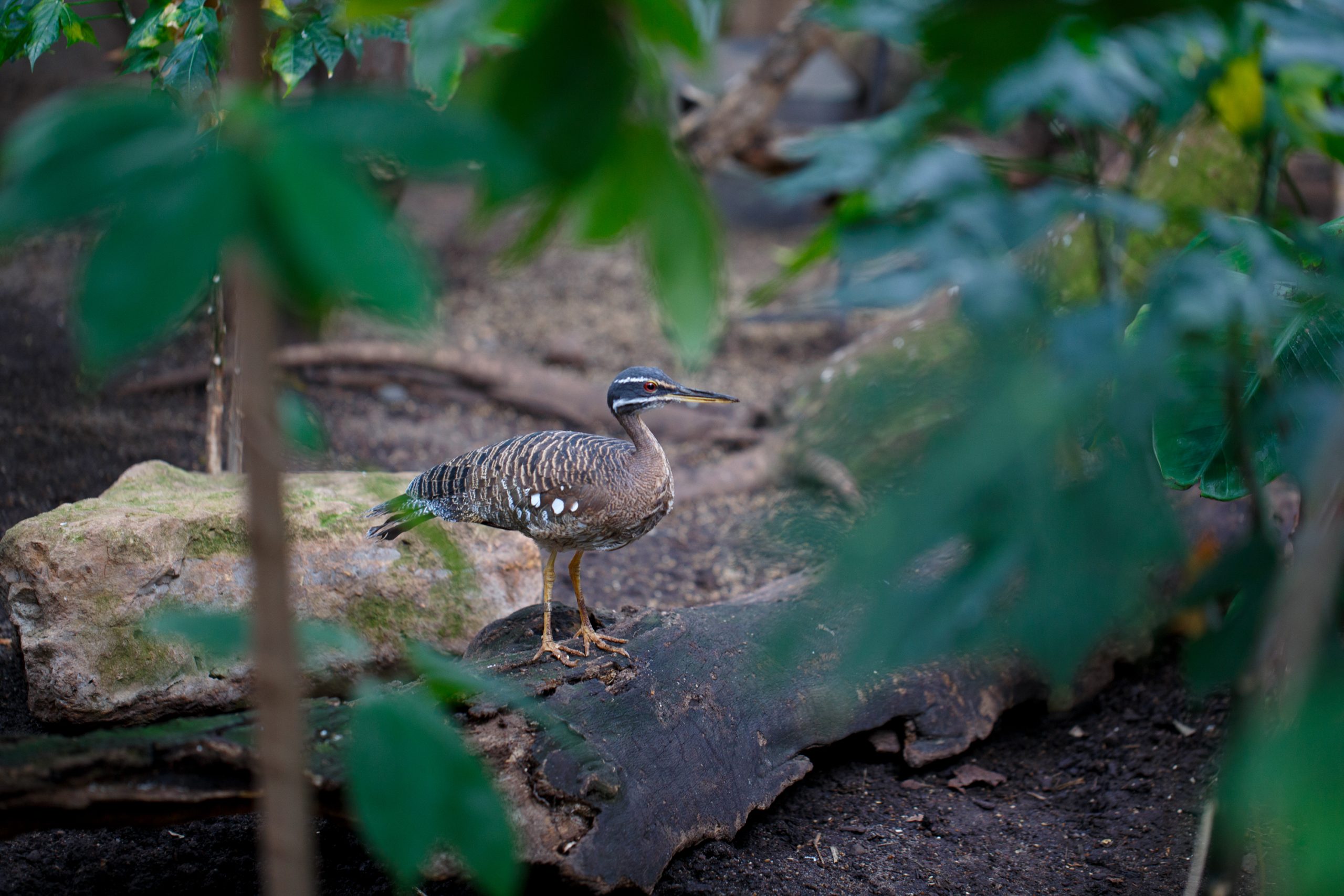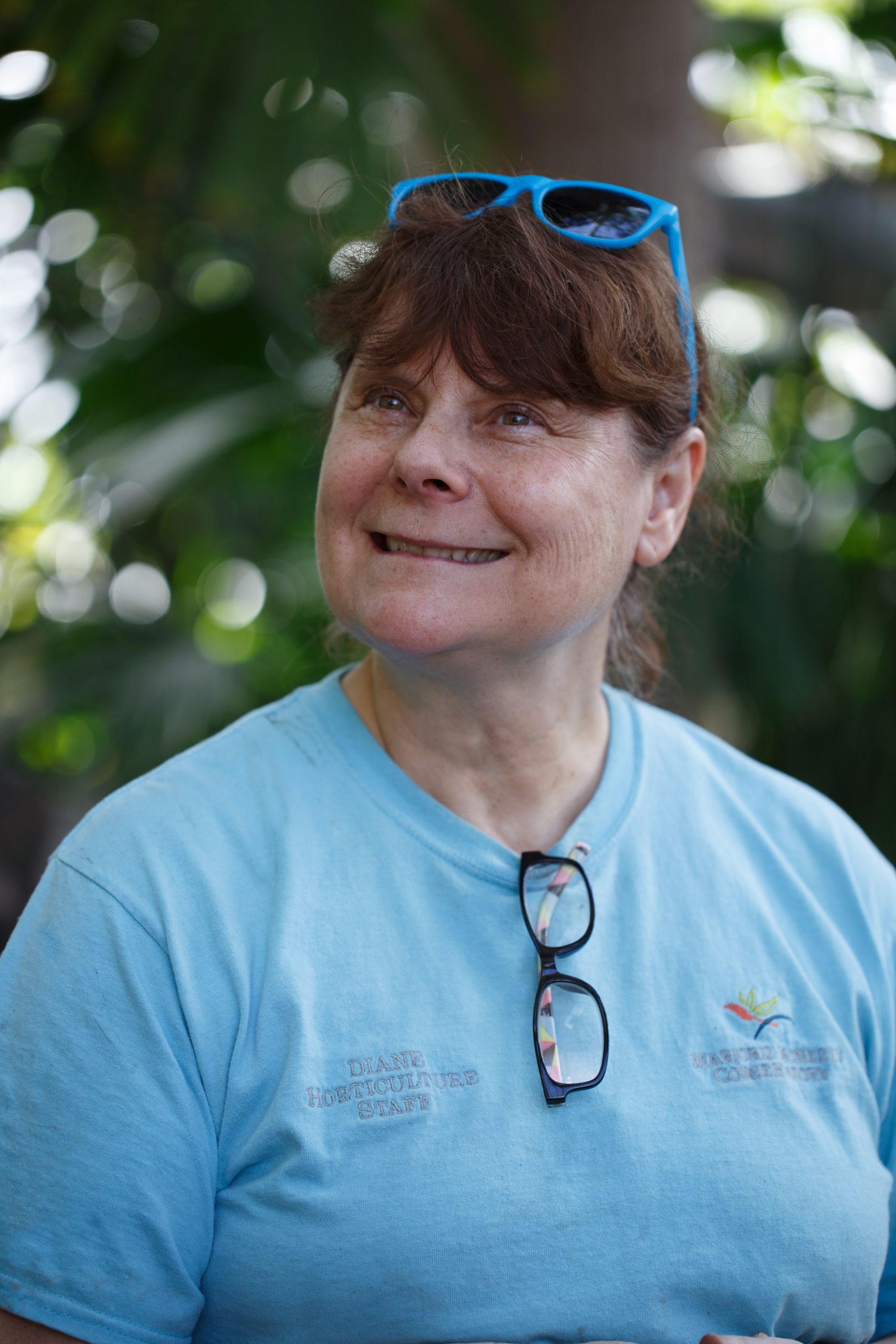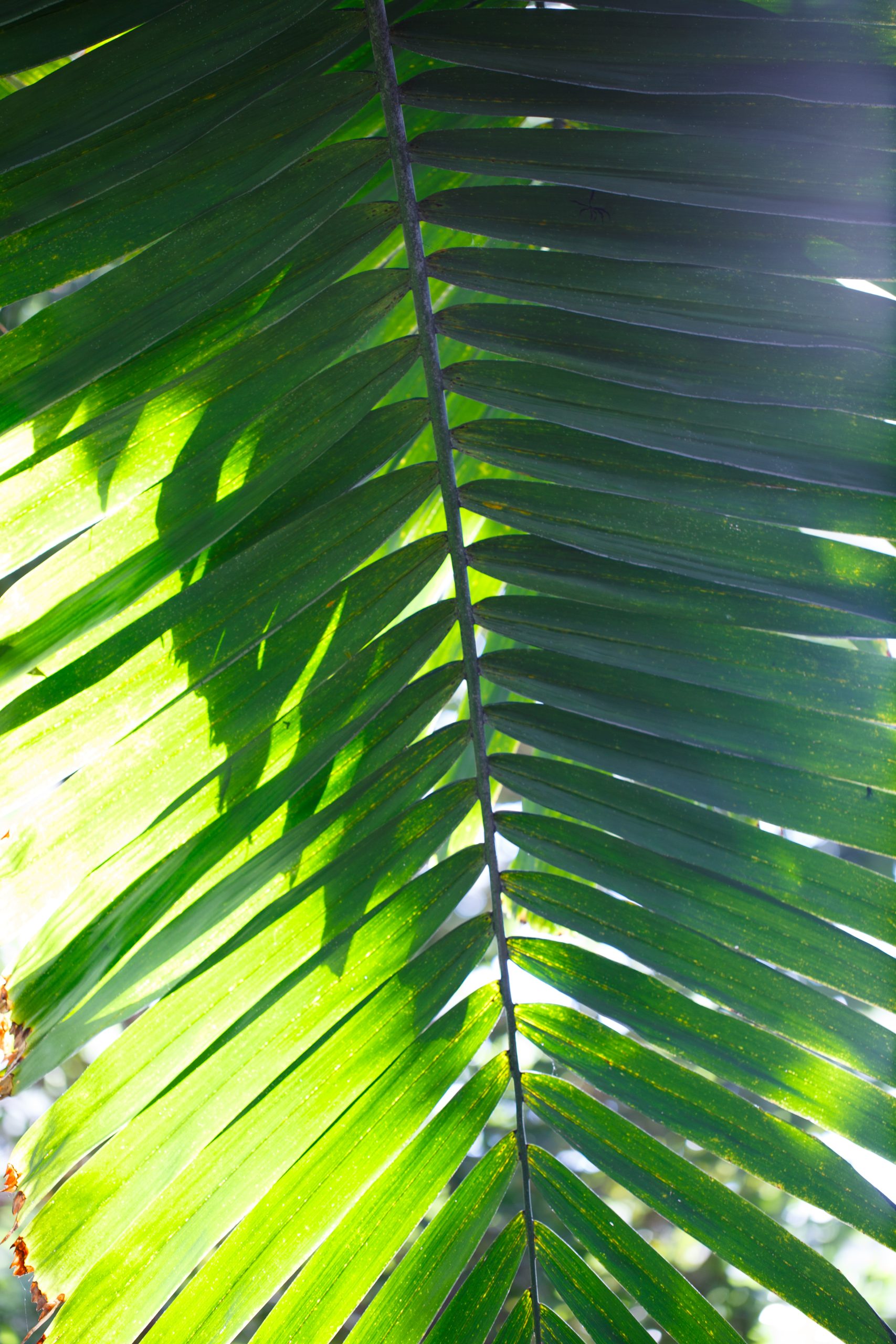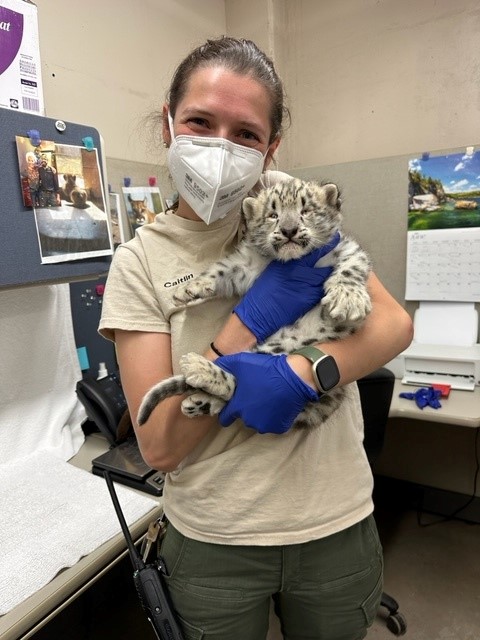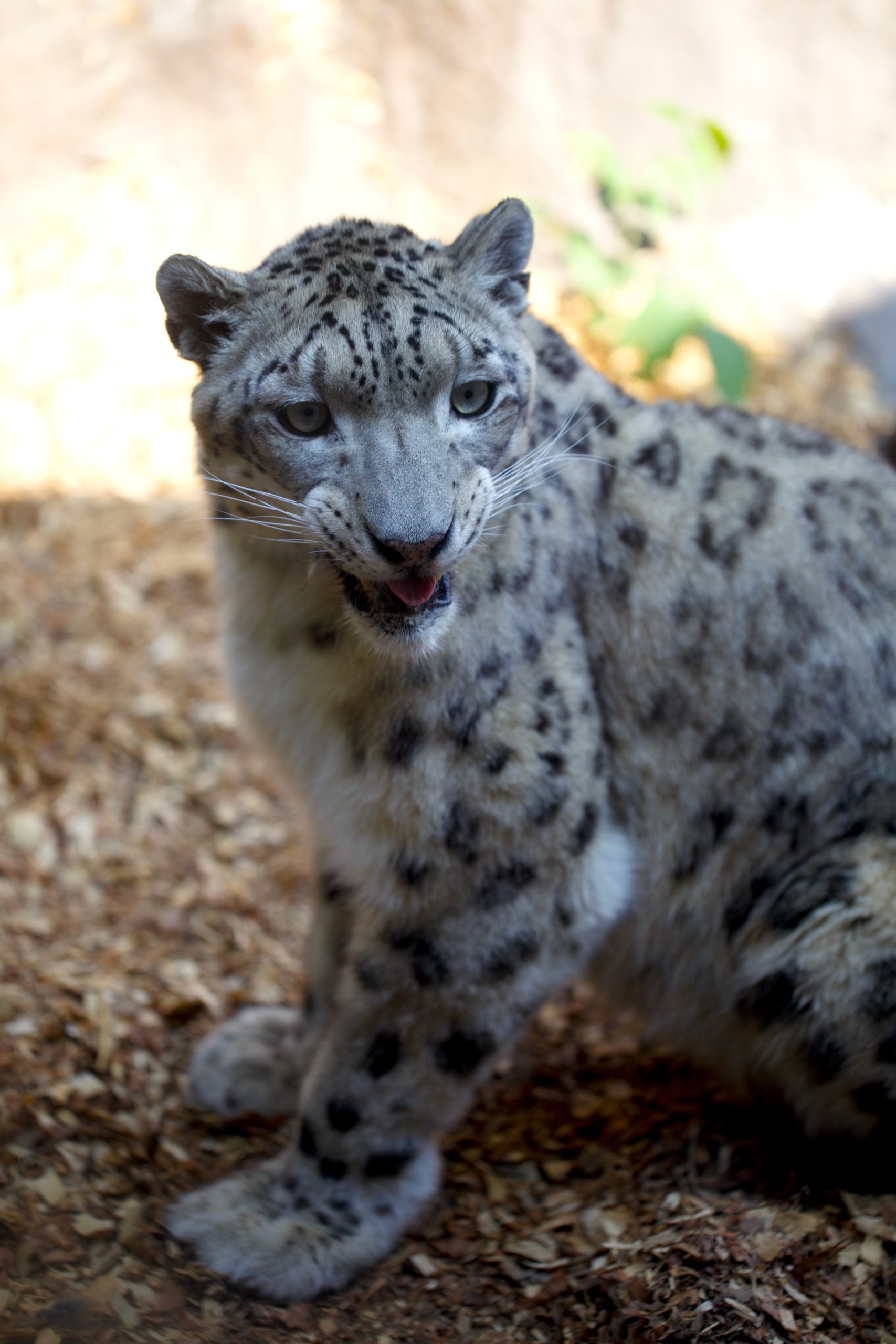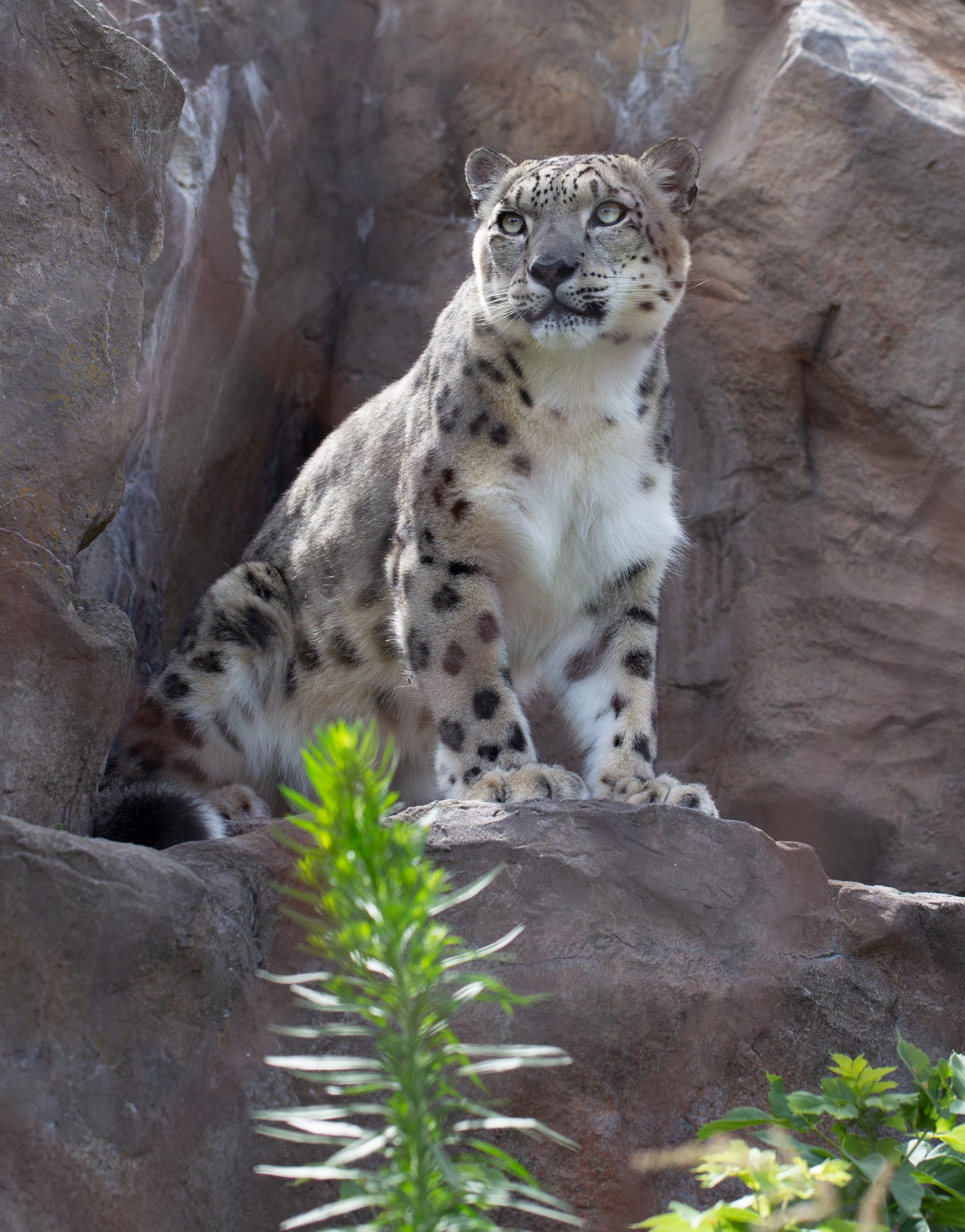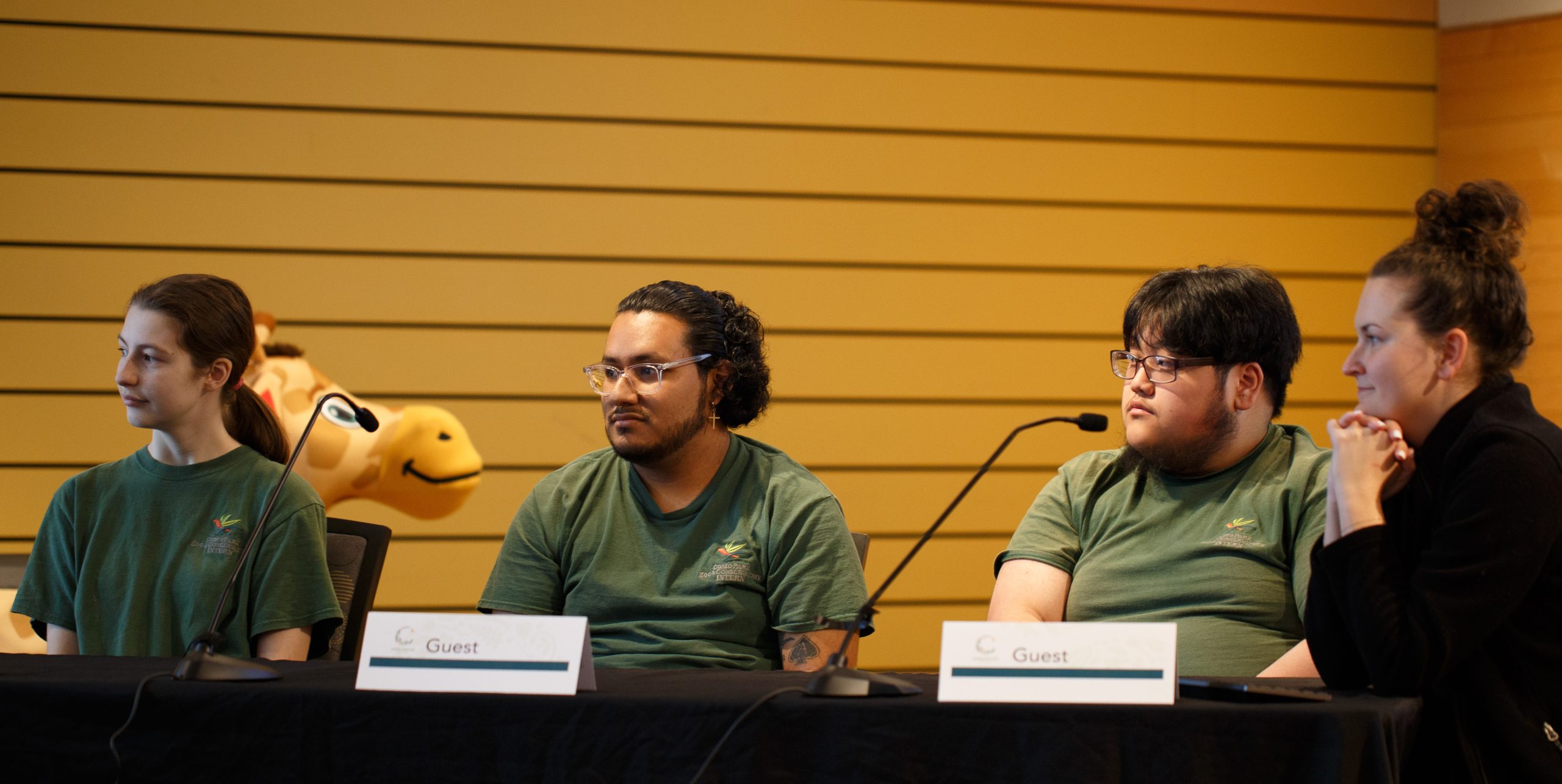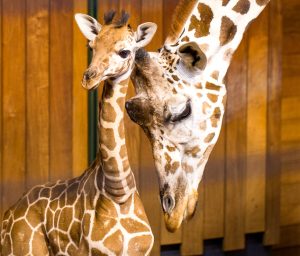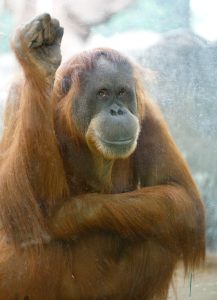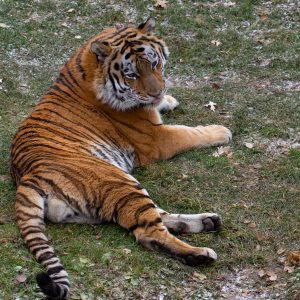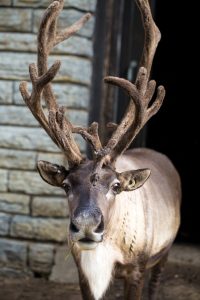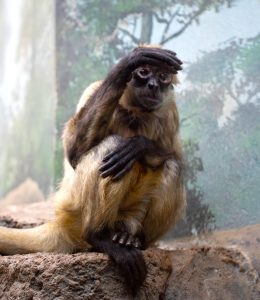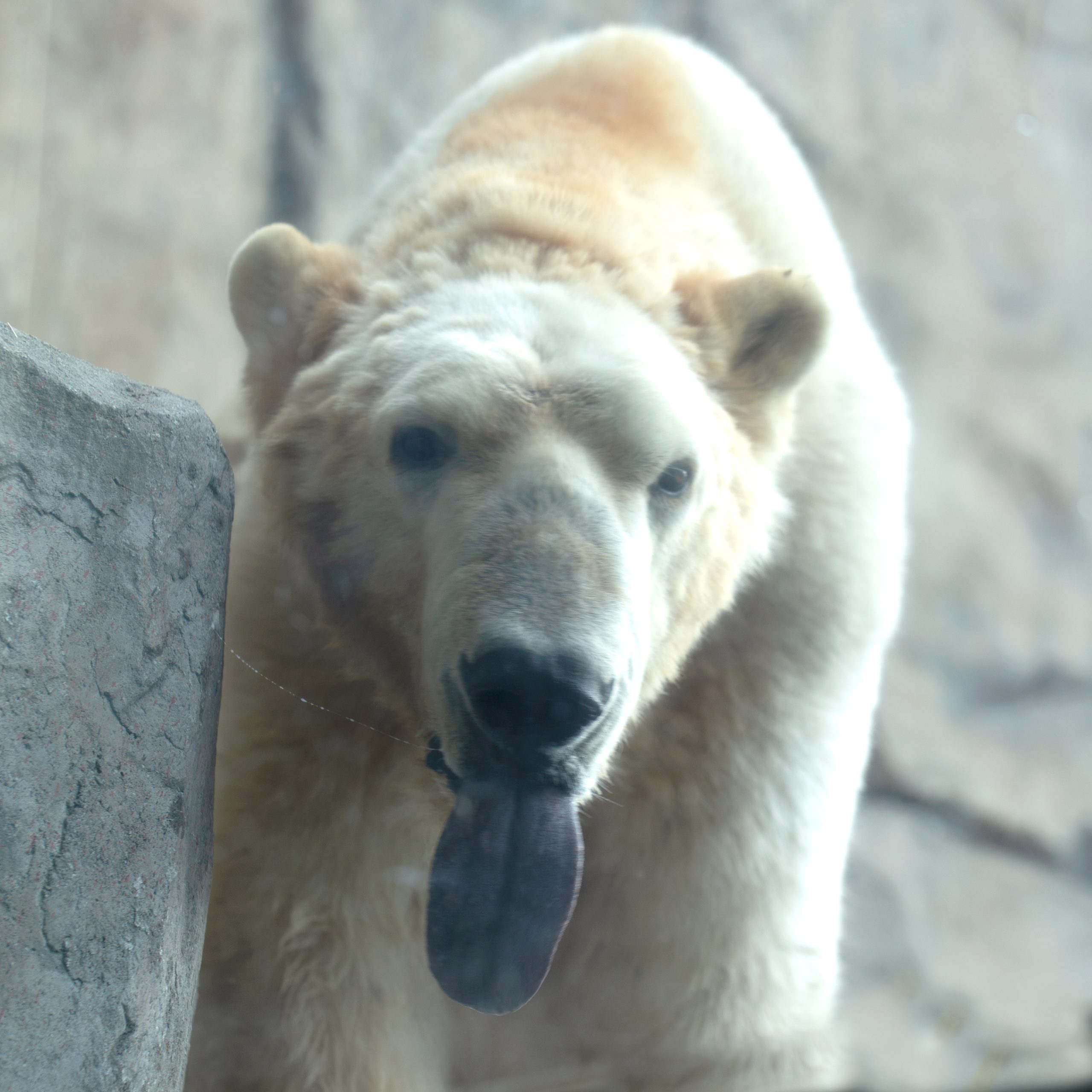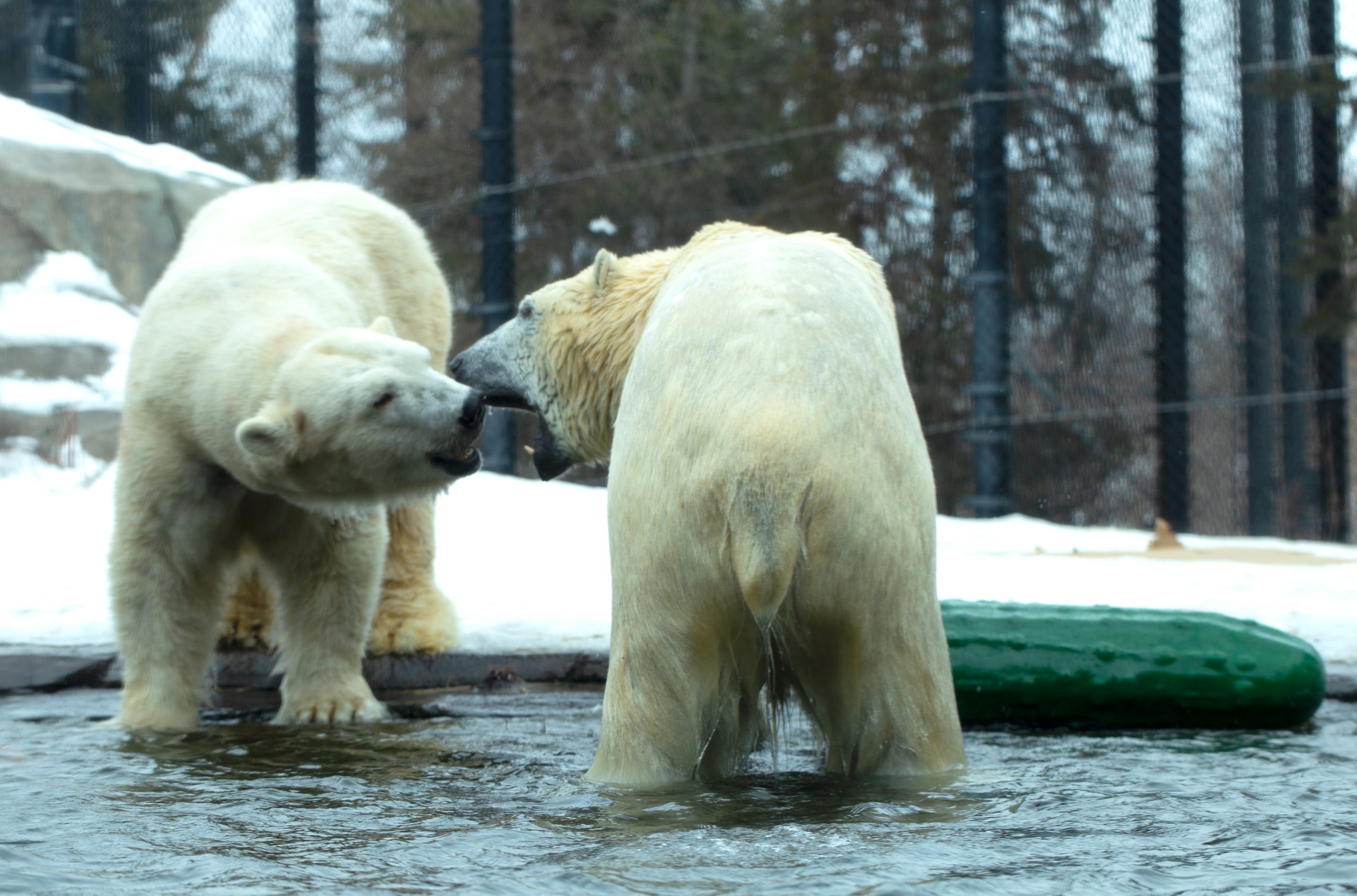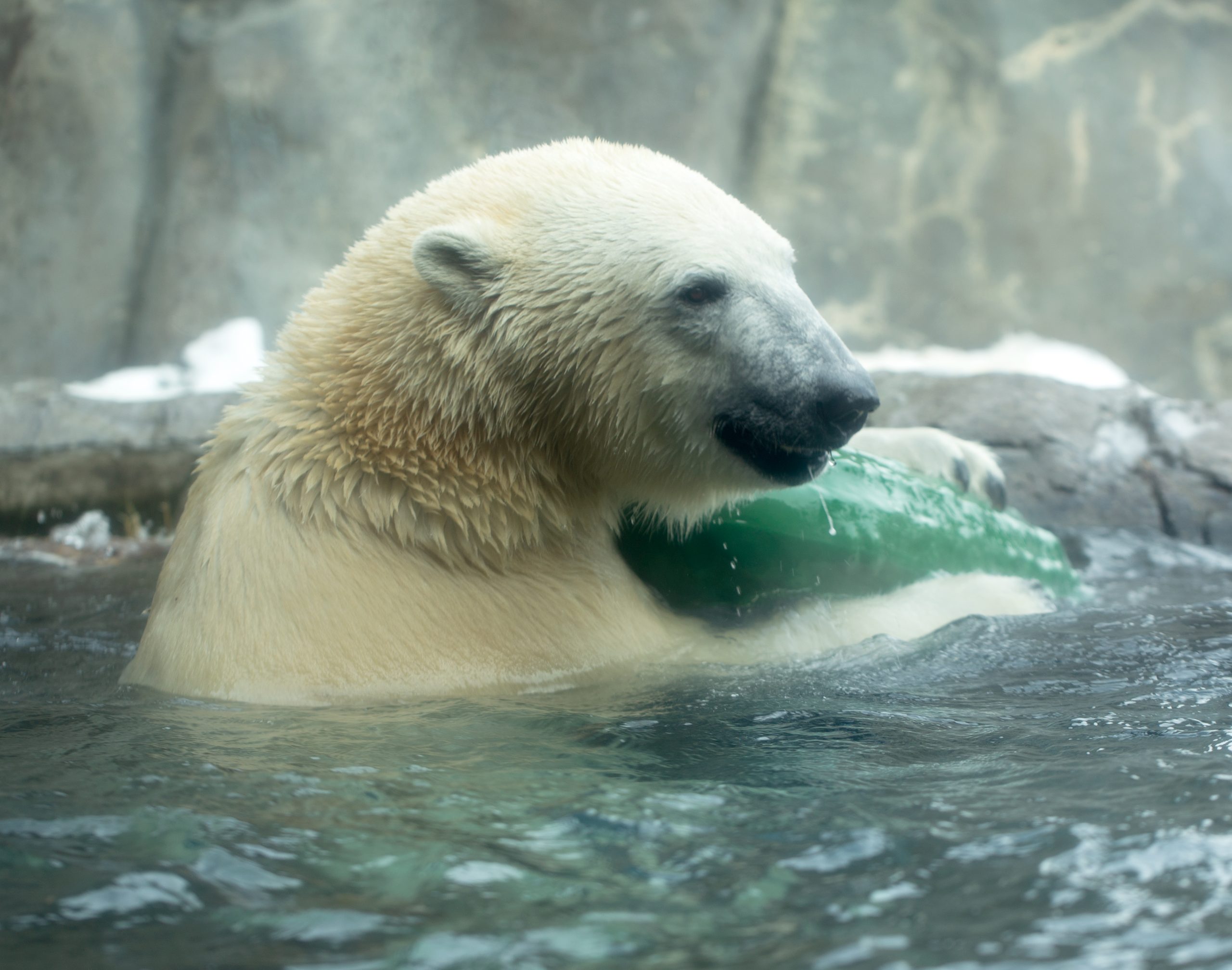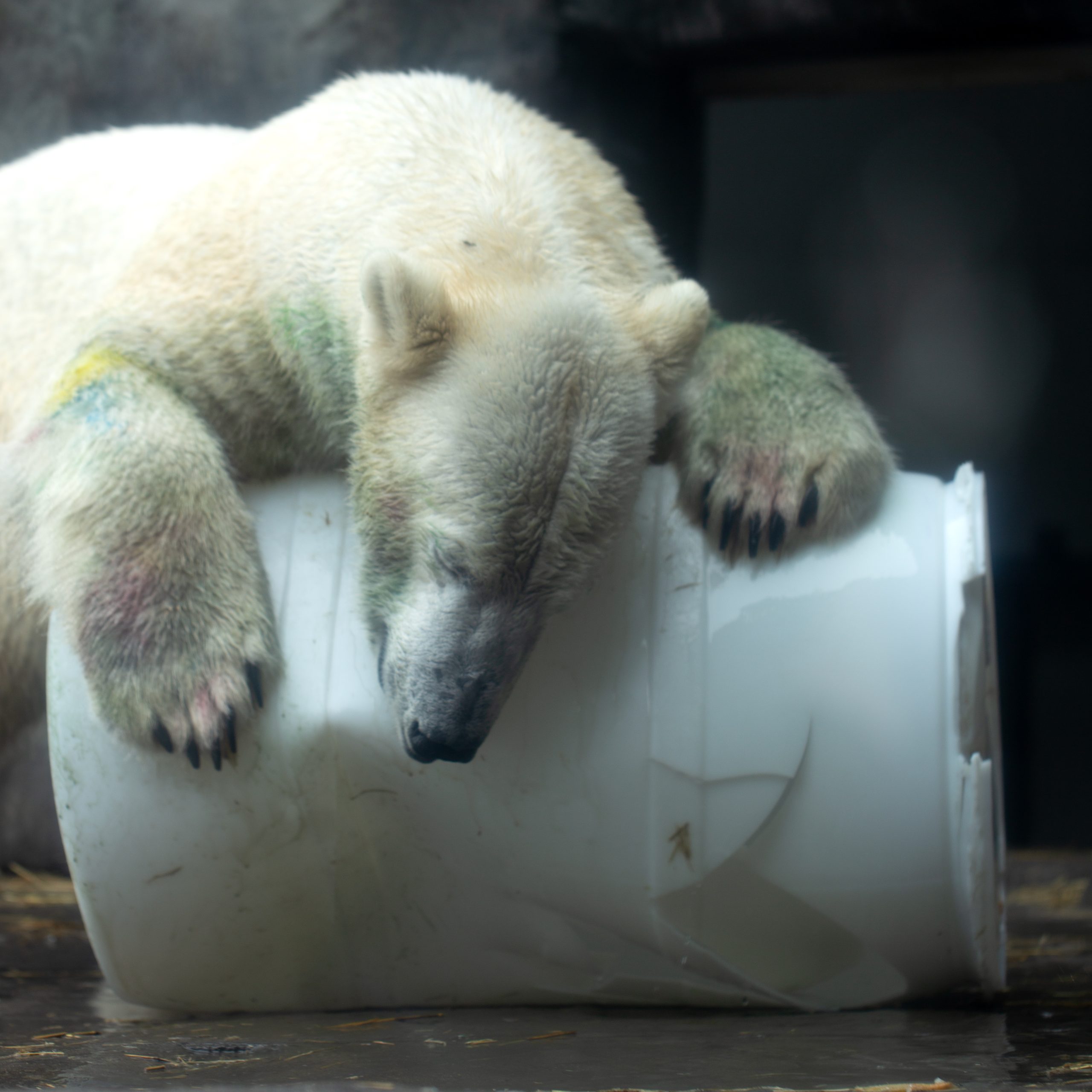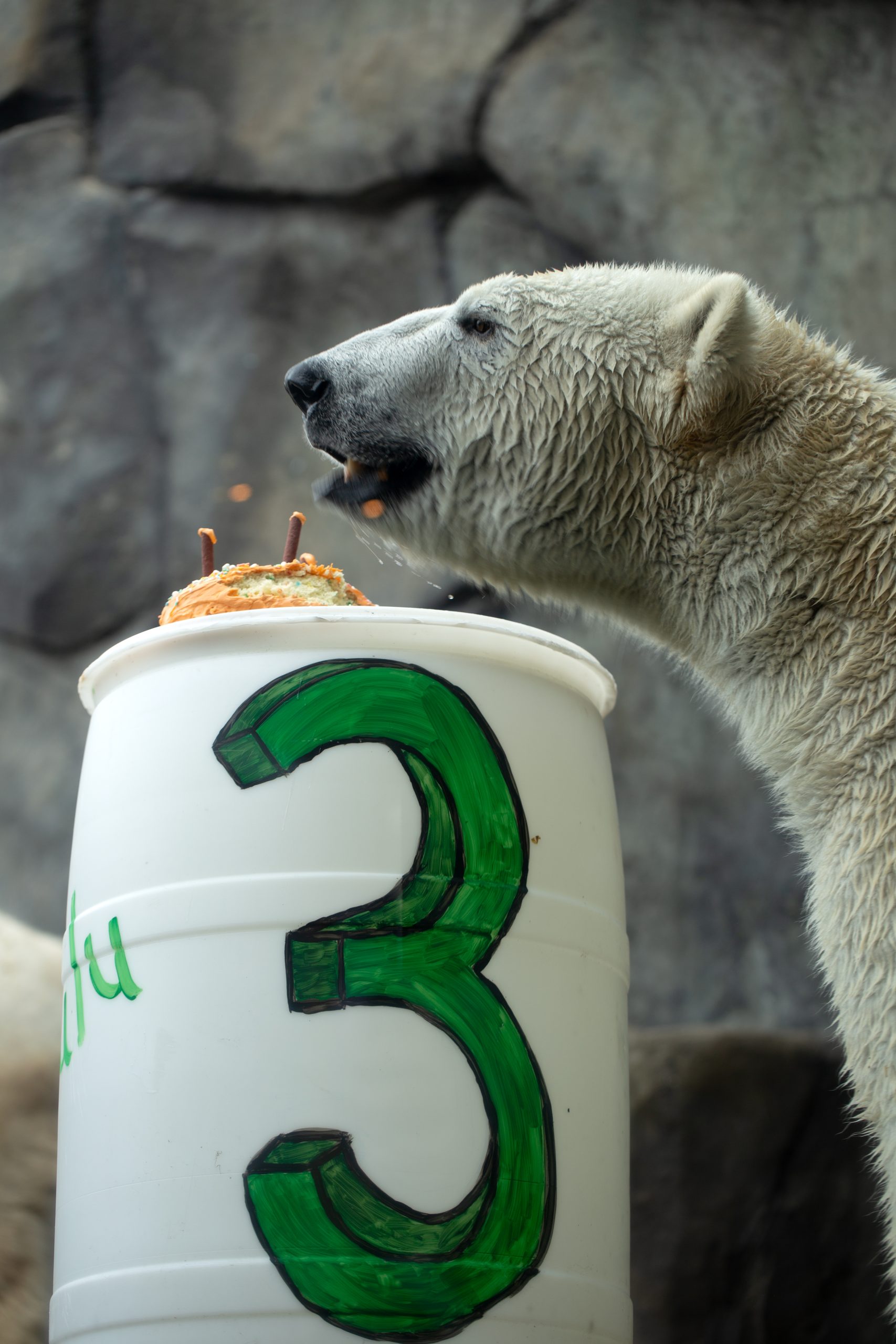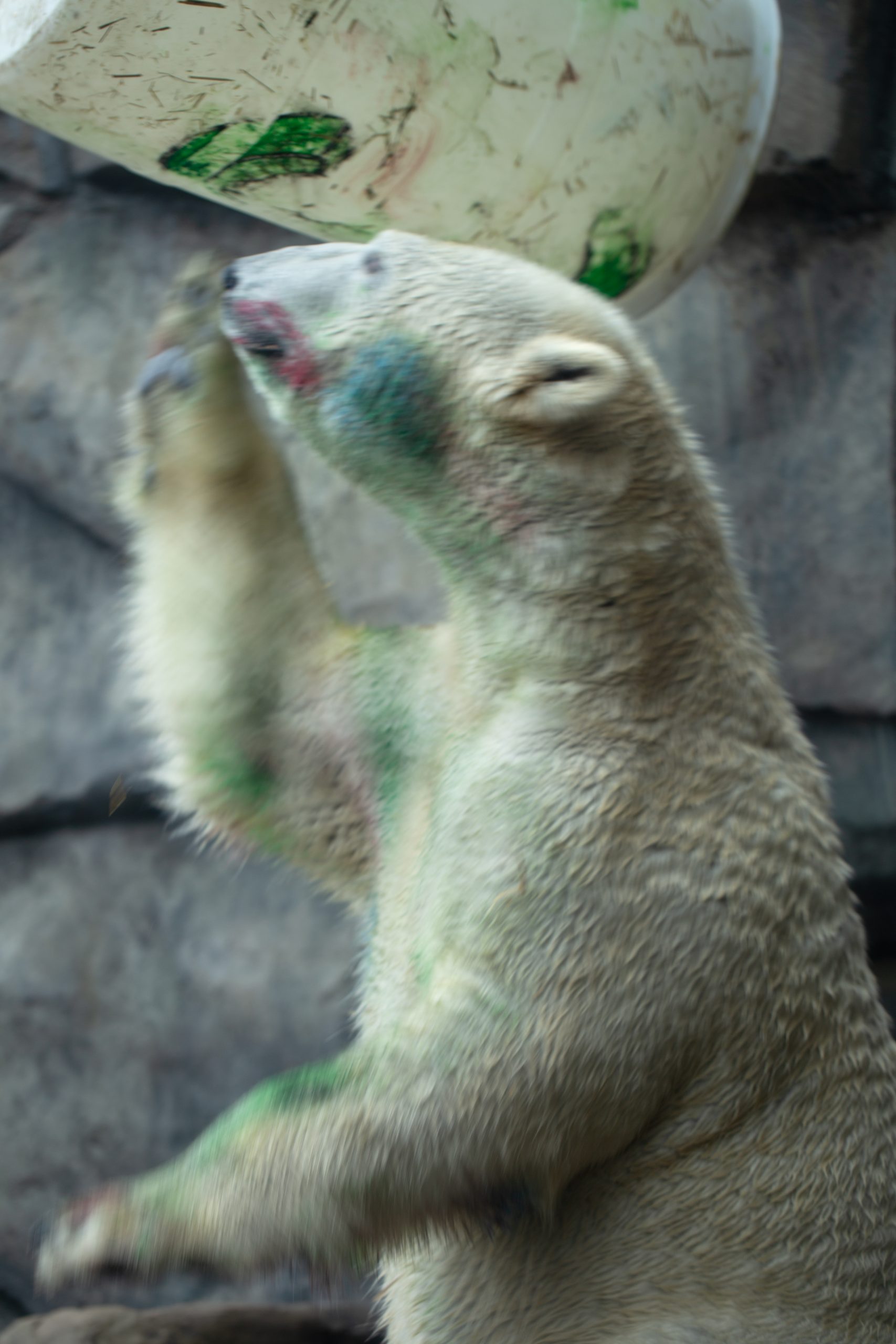Conservation Champion Jill Erzar traveled to Tanzania to help Wild Nature Institute track giraffe across the Serengeti
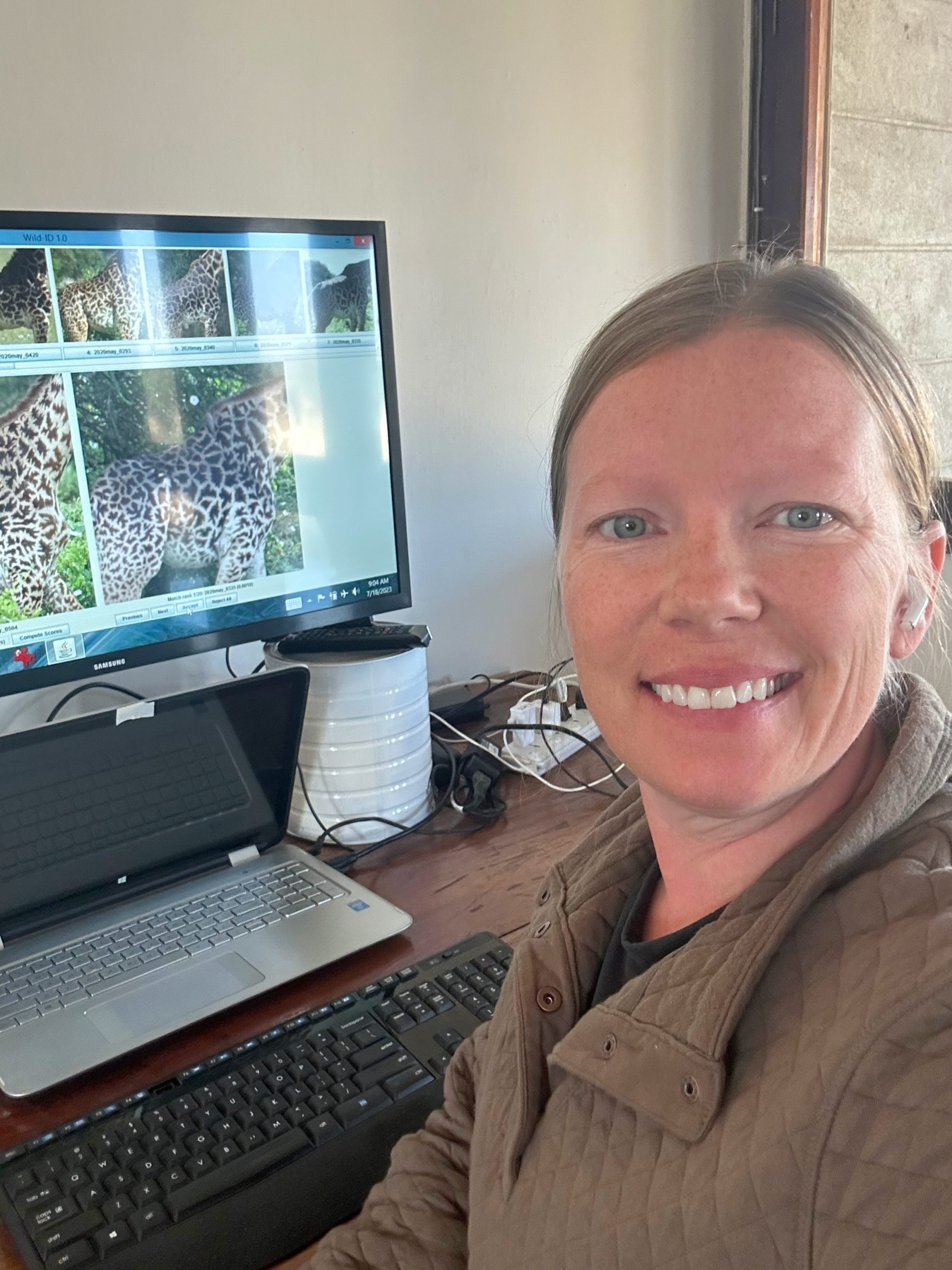
“Giraffes have been very underestimated, and under-researched for a long time,” says Como Zoo keeper Jill Erzar. “But over the last decade or so, that’s begun to change, and we’re beginning to understand that giraffes are, in fact, highly intelligent, with social hierarchies and relationships that are as complex as elephants and chimpanzees.”
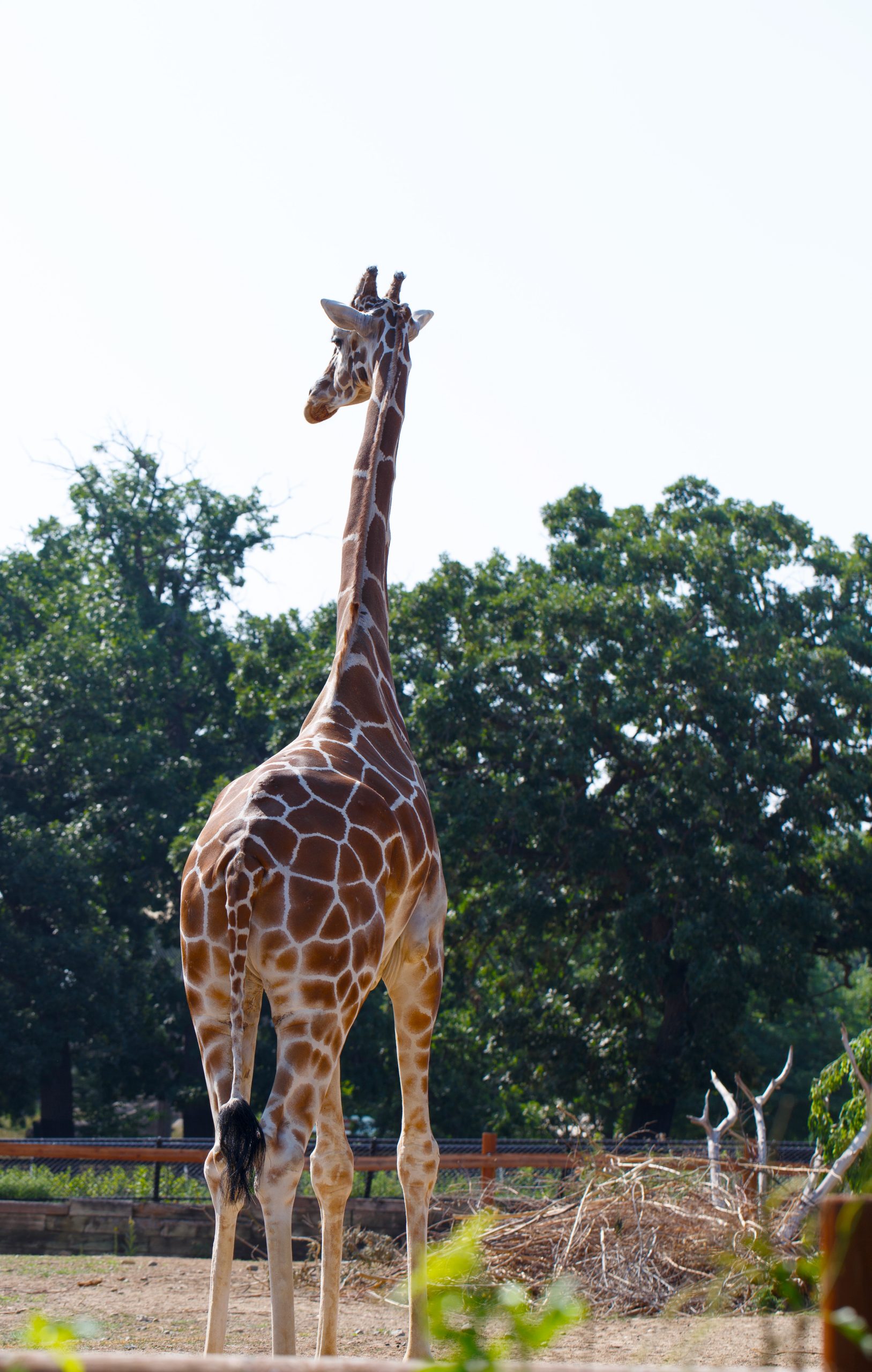
Reaching heights of 18 feet and beyond, giraffes are the tallest mammal on earth.
But with brains that are relatively small compared to their body size, scientists haven’t always been sure if their elevators go all the way to the top.
“Giraffes have been very underestimated, and under-researched for a long time,” says Como Zoo keeper Jill Erzar. “But over the last decade or so, that’s begun to change, and we’re beginning to understand that giraffes are, in fact, highly intelligent, with social hierarchies and relationships that are as complex as elephants and chimpanzees.”
Thanks to a recent grant from Como Friends’ Conservation Champions program, Erzar herself has been contributing to that body of research as a volunteer for the Wild Nature Institute. The conservation group behind the largest demographic survey of giraffes in the world, Wild Nature Institute takes a non-invasive approach to giraffe research, relying entirely on photographic identification to track the births, deaths, movement and social bonds of about 4,100 individual giraffes across 25,000 square miles of the Tarangire and Serengeti ecosystems in Tanzania.
As a seasoned giraffe keeper who can spot the subtle difference in every giraffe’s unique markings, Erzar’s well-trained eye and expertise were a welcome skill set on the Serengeti this summer, as the conservation group worked to compare and analyze more than a decade’s worth of data about wild giraffe. “I was able to make more than 9,000 matches during the 10 days I spent in country,” says Erzar, who also got the chance to meet and learn from giraffe experts in the field. “For me the biggest take-away from this trip is that giraffes need protected areas because poaching is still their number one risk. Even with projected climate change impacts in that area, nothing threatens their survival as much as illegal hunting and poaching.”
Though it will take time for Wild Nature Institute’s findings to be published and shared more widely with other conservation researchers, new discoveries about giraffes are coming to light all the time. For instance, scientists who once considered giraffes to be aloof and anti-social have discovered that in fact, giraffes live in complex social systems and super communities, and even prefer to eat with favored companions. A 2023 study found that giraffes are capable of statistical reasoning, while a 2021 study found that giraffes prefer a fair fight, and will only spar with individuals of the same size. Another growing topic of interest within the giraffe field is the so-called “grandmother hypothesis,” a theory that suggests that menopausal female giraffes may have an important role to play in raising young.
“It’s really cool to see that giraffes are finally having their moment, and I absolutely love being on the forefront of a group that believes that non-invasive [data gathering] is the best way to study them,” Erzar says.

Como Friends’ Conservation Champions program, funded with donations from our generous supporters, has made it possible for Jill to travel to Africa three times in recent years, supporting conservation partners in the field, while bringing home new experiences and insights that can help enhance the care she gives to animals at Como Zoo every day. “Making the trip to work with Wild Nature Institute helps me to tell the story of our own giraffes better,” she says. “I can tell visitors that our giraffes really do look and behave just like the giraffes in Tanzania. And the more we learn about giraffes, the more we can do to improve their welfare in the wild and here at Como.”
The biodiversity of Como’s rainforest habitat requires complex care

“When we try to pick out anything by itself,” the famous naturalist John Muir once wrote, “we find it hitched to everything else in the Universe.”
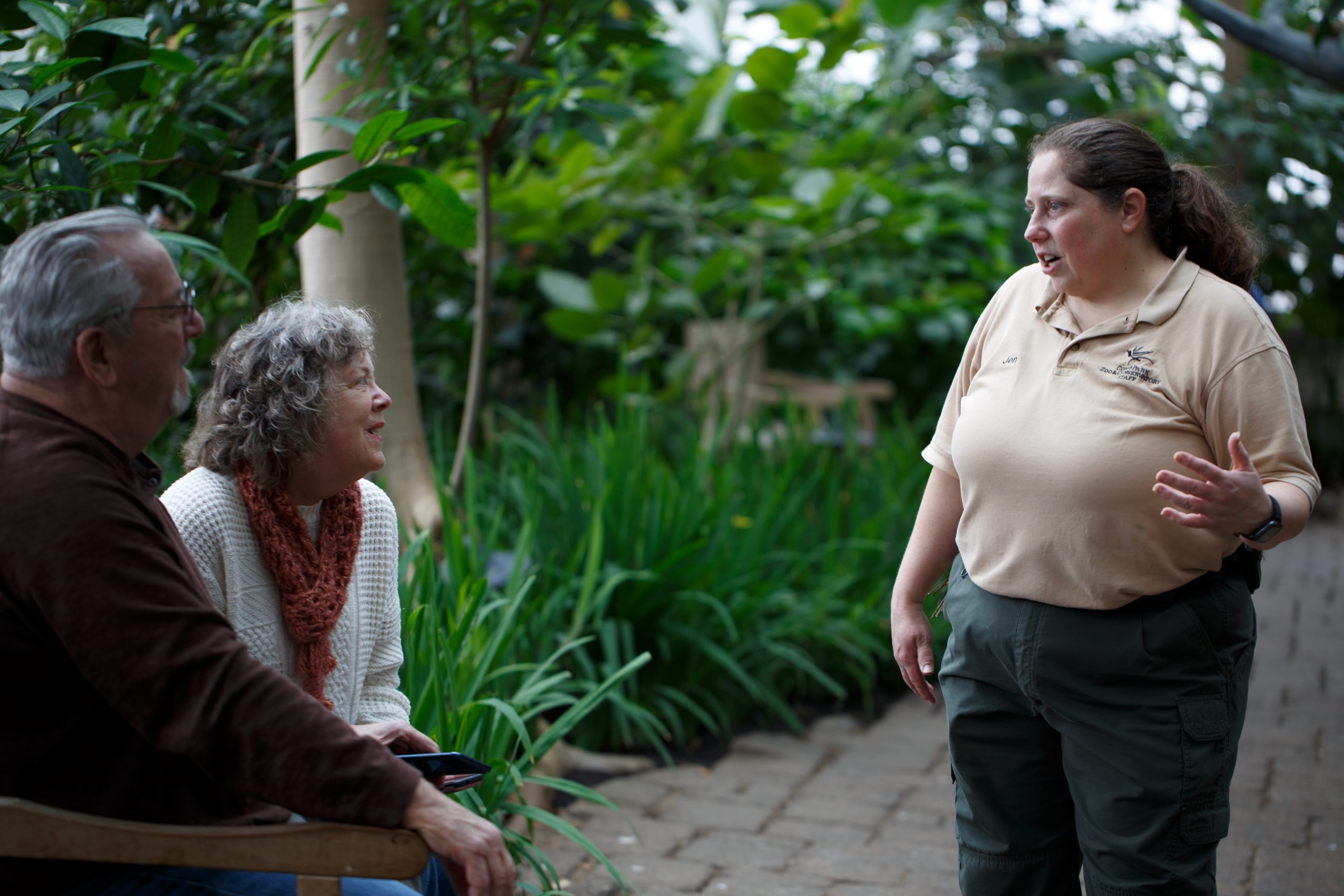
The profound interdependence of plants, animals and people is one of the lessons Como Park Zoo & Conservatory strives to convey to more than a million visitors every year, and nowhere is that lesson more evident than in Tropical Encounters. Opened in 2006, the immersive rainforest habitat features an extensive array of tropical plants and trees, and an equally diverse range of animals, from high-flying tanagers, to a slithering anaconda, to Chloe, Como’s beloved free-ranging sloth.
With so many living things under one roof, Como Zoo keepers and Marjorie McNeely Conservatory horticulturists collaborate closely within Tropical Encounters to ensure that making a change in one corner of the habitat doesn’t have negative impacts for other residents of the rainforest. That’s why the Tropical Encounters team is taking its time on a major soil replacement project this season paid for by your contributions to Como Friends.
Visitors this summer may notice that horticulturists are taking a staged approach to the process, removing spent soil from one location at a time, to make sure that the root systems of rainforest trees and the animals that live in the vicinity are all thriving. The effort is a little bit like repotting a giant terrarium, says horticulturist Diane Rafats: “We do take special care in this habitat. Everything we do here can affect everything that lives here.”

Private support secured by Como Friends is critical to making behind-the-scenes improvements that keep every corner of the Marjorie McNeely Conservatory healthy and thriving. This year, Como Friends’ funding will also support a new lighting system for the North Garden’s gorgeous collection of economic plants, a new sound system to improve the experience for visitors, and a new design plan to renovate and repair Como’s popular Victorian Water Garden pool. Thank you!
It’s been a busy season of new arrivals at Como Zoo
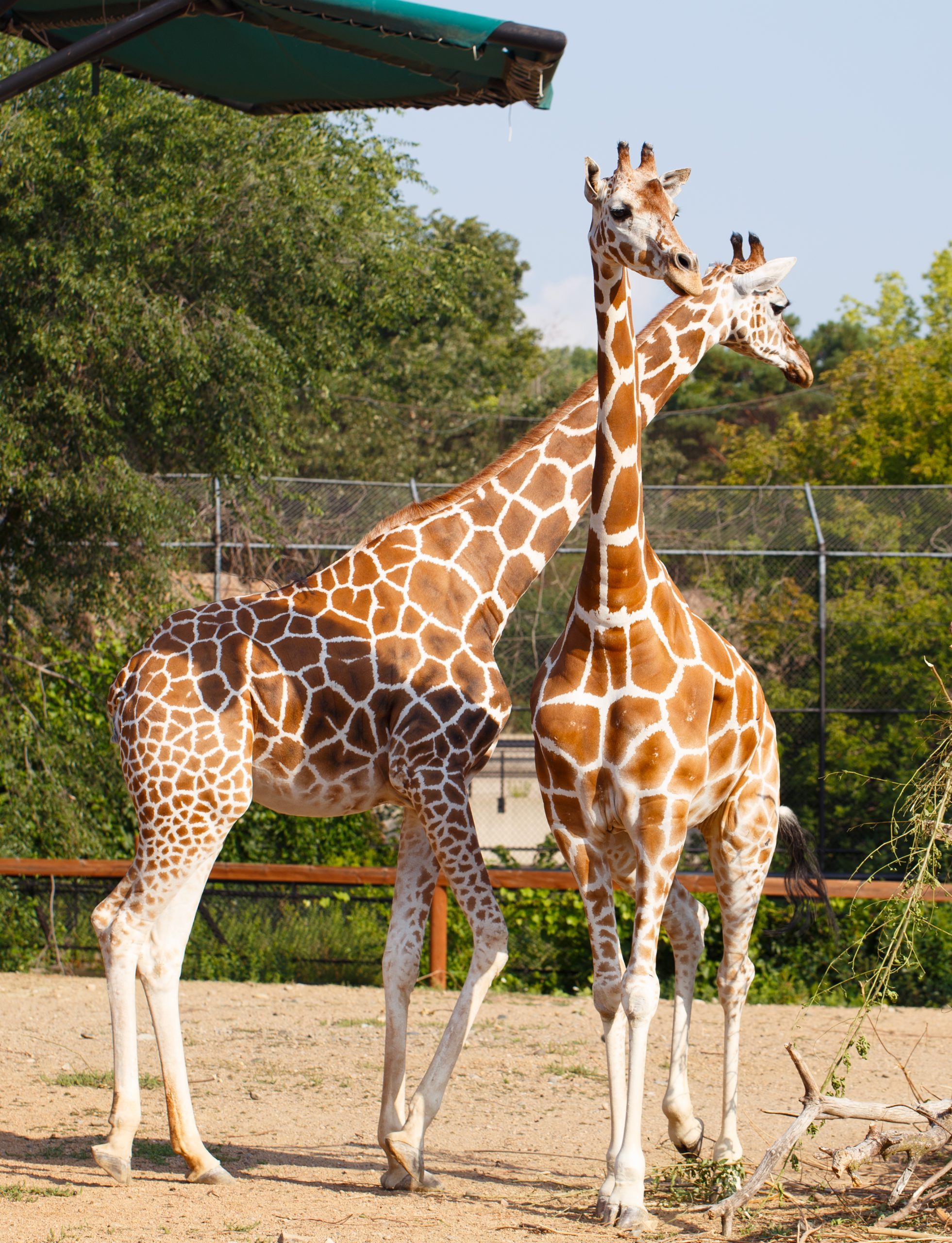
Stanley, Houdini, Mutambi, Stevie….there are a lot of new names to match to new faces at Como Zoo. Here’s a sneak peek of the new animals you should be sure to meet on your next visit.
-
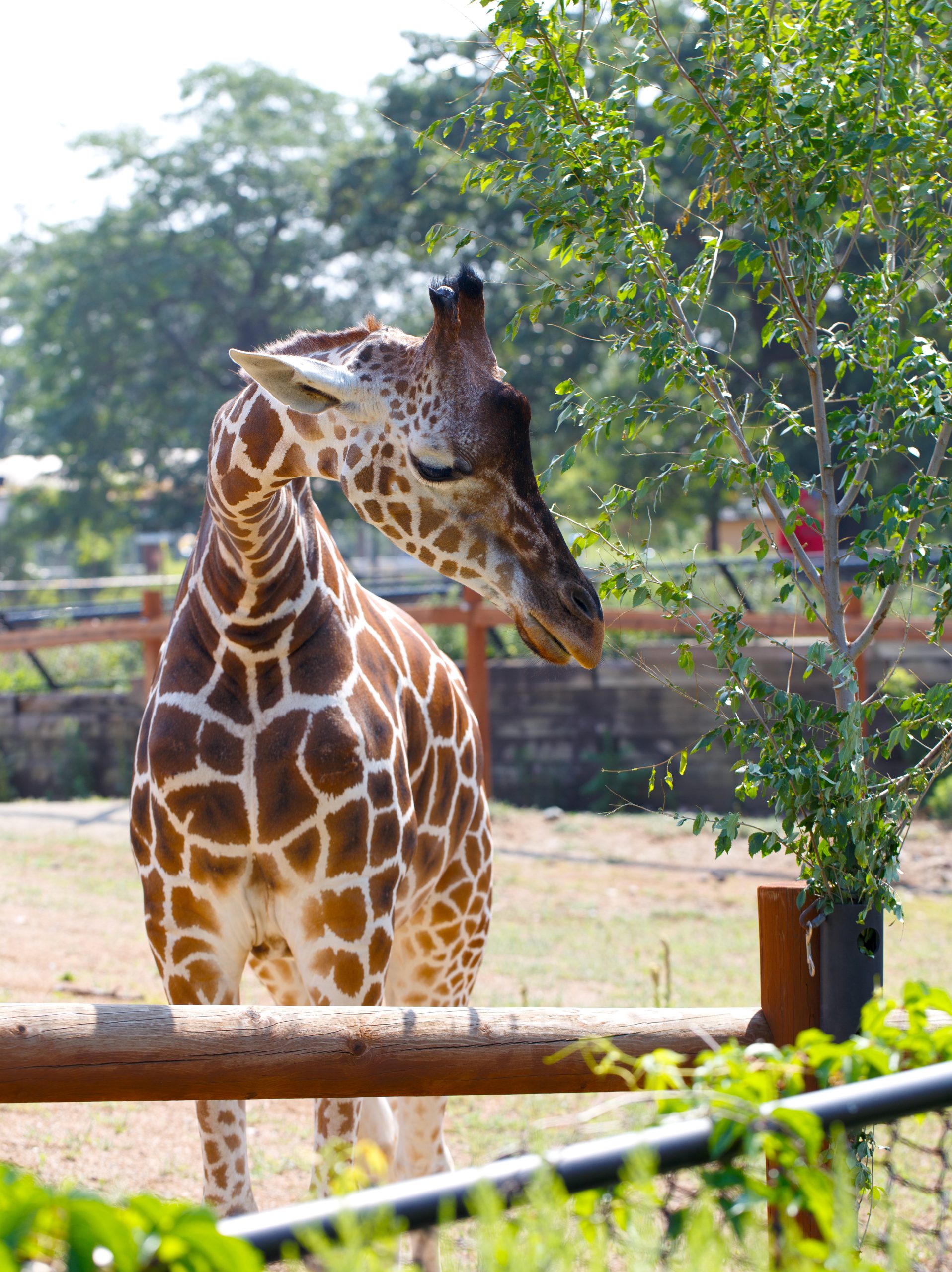
Zinnia
Species: Reticulated GiraffeSeven-year-old Zinnia arrived at Como Zoo this spring to be a companion to Clover, who lost her long-time friend, 23-year-old Daisy, earlier this year. Zinnia is easy to recognize, says senior keeper Jill Erzar, because of her “beautiful dark face and the cute freckles on her bum.” Though she’s got a laid-back vibe, keepers say she’s very food-oriented and is increasingly curious about the giraffe feeding station. So far, Zinnia and Skeeter, the habitat’s resident male giraffe, are giving each other lots of space. “Skeeter seems to be terrified of her,” Erzar says. “We have no idea what that’s about.”
-
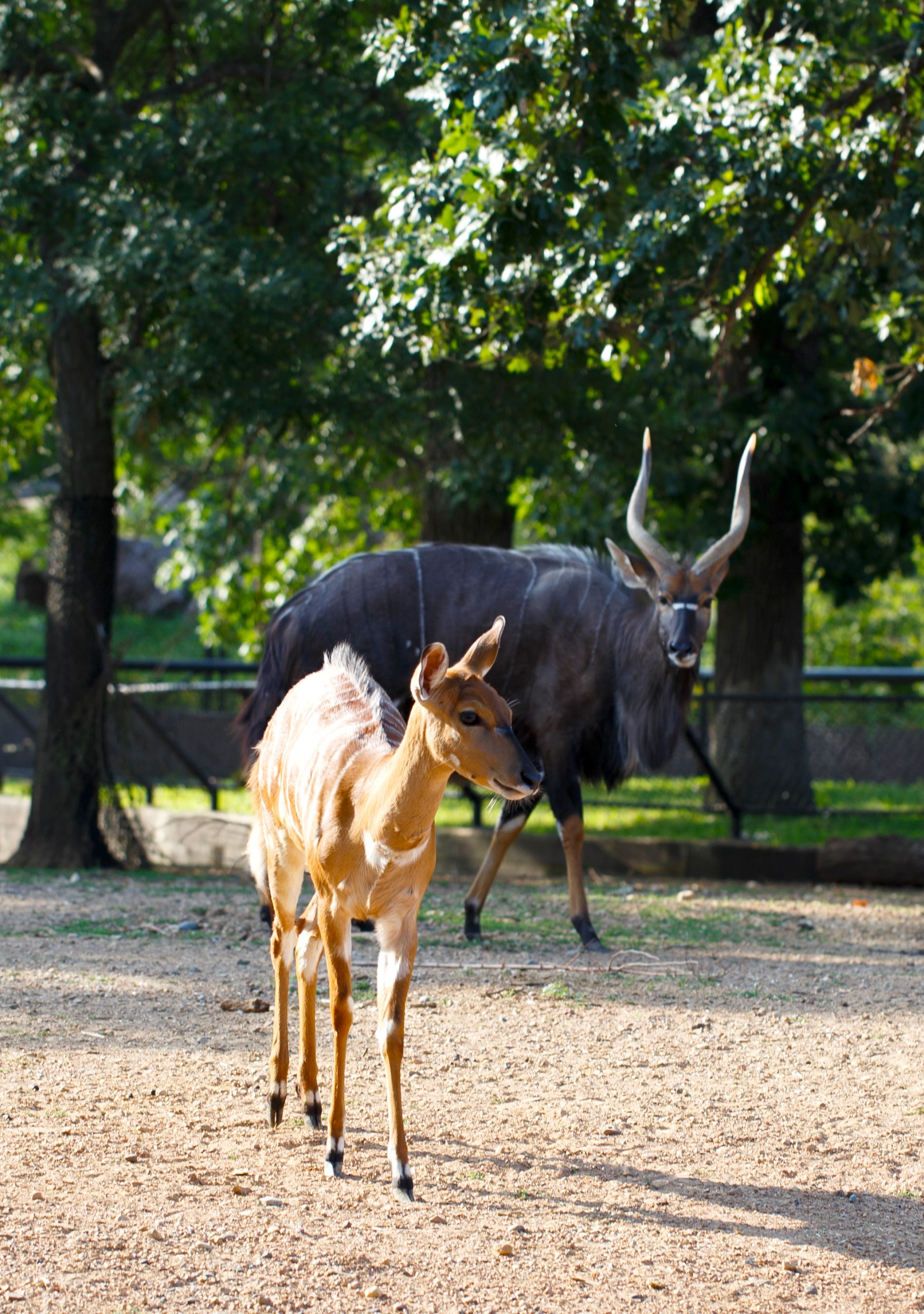
Stanley and Stevie
Species: NyalaThese spiral-horned antelopes native to southern Africa are known for their eye-catching coats and their gregarious nature. “The nyala are very calm, interactive and engaging,” says Erzar. “They don’t mind crowds either—they’re incredibly chill.” Brought to Como Zoo this spring as part of a species survival plan, the two young nyala may become a breeding pair if the chemistry is right. “We haven’t seen any behavior like that so far, but nyala males have a unique breeding display. The mane along their spine stands completely upright when they’re trying to attract a mate, so that’s something we’ll be looking out for in Stanley.”
-
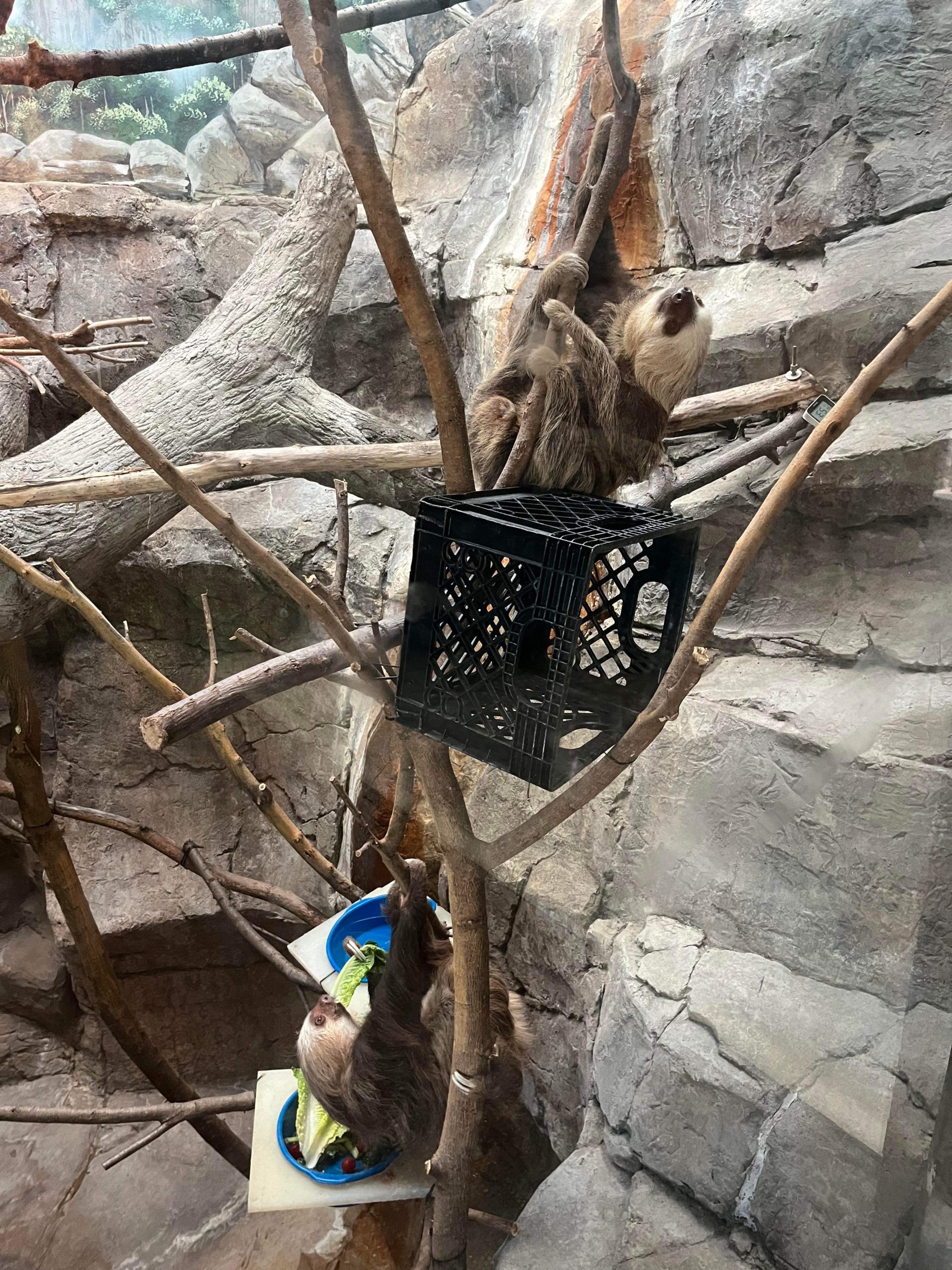
Ziggy and Sago
Species: Hoffmann’s Two-Toed SlothsThe milk crates you see strung up in the former lemur habitat have become a favorite hang-out spot for Ziggy, a 2-year-old male sloth who’s just moved in with his partner Sago, a 5-year-old female. The couple could become a breeding pair in the future, though, as zookeeper Mike Marazzi explains, the courtship process can be very slow. “Sloths are very private about things, so any breeding that takes place is usually going to happen overnight, and when they do have a baby, it could be a bit of a surprise to us since female sloths don’t always show their pregnancies with a visible weight gain,” he explains. Though they’re living in the primate building this summer, sloths are not related to their neighbors the orangutans and spider monkeys. Instead, they belong to the superorder Xenarthra, and share a family tree with anteaters and armadillos.
Photo taken by Zookeeper Michelle Hays.
-
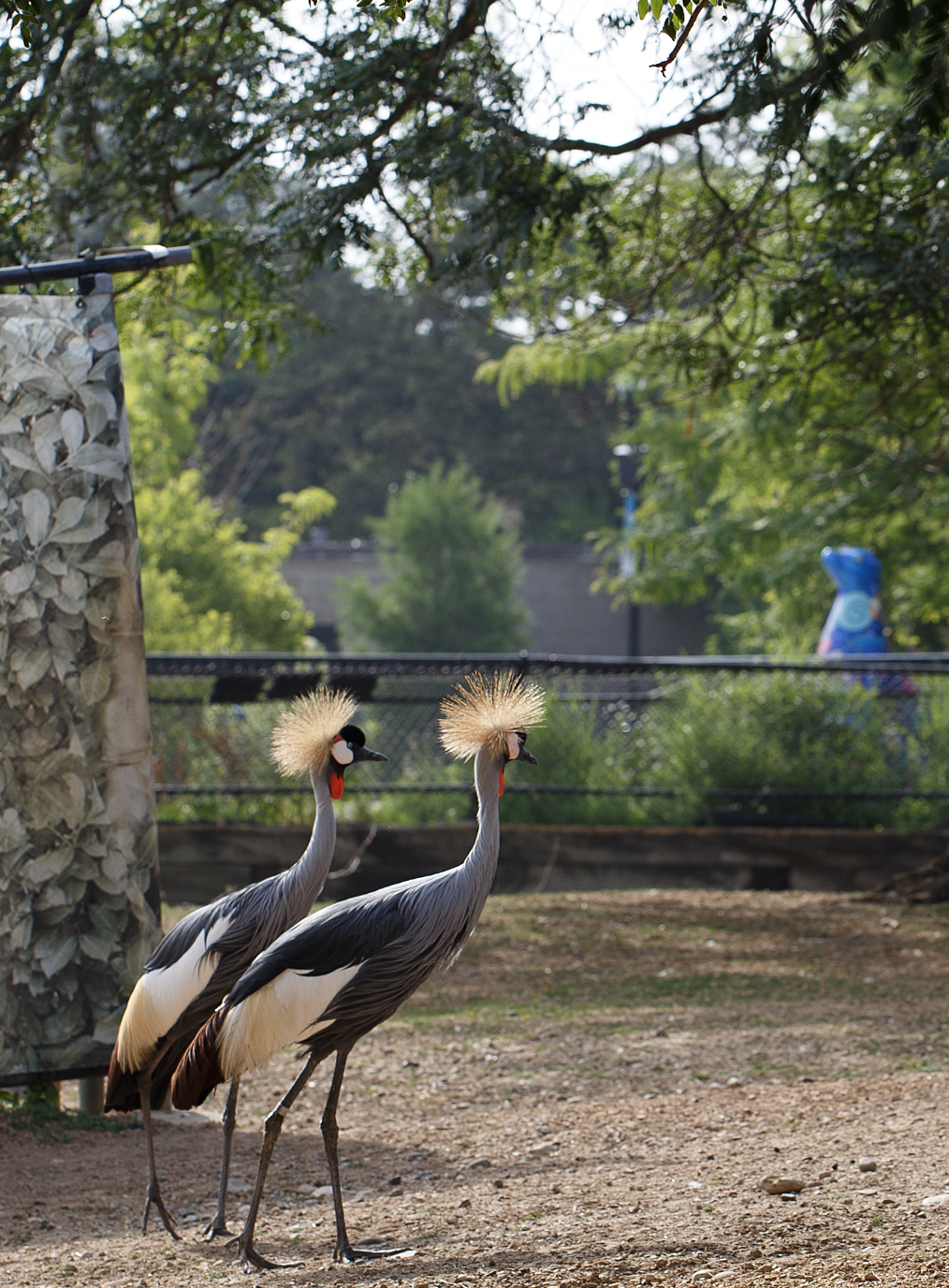
Houdini and Mutambi
Species: African Gray crowned craneHoudini, 13, and Mutambi, 5, are part of a species survival plan breeding recommendation for the gray crowned crane, the national bird of Uganda. But so far, Houdini is only doing his courtship dance for his keepers. “Houdini hasn’t quite figured out that his girlfriend is awesome,” Erzar says. You might notice the cranes stamping their feet—a behavior that helps flush insects and other prey out of the grass.
To learn more about the new faces at Como Zoo, check out the Fall edition of the Como Friends Insider. Delivered free to Como Friends’ members, this quarterly newsletter features behind-the-scenes stories about the people, plants and animals that make Como Park Zoo & Conservatory Minnesota’s most visited cultural destination. Become a member today!
Blind at birth, Como Zoo’s newest snow leopard is using her other four senses to explore her new world
One of the most anticipated new arrivals at Como Zoo, the seven-pound female snow leopard born on May 6 is taking her time getting acquainted with her new world. Like all snow leopard cubs, spending quality time with her mother is crucial to getting a good start in life.
“With snow leopards, the father is involved in the breeding process, and then he is actively pushed out of the environment in the wild,’’ explains Como Zoo keeper Hans Jorgensen. That’s why Como visitors may notice that father Moutig is almost always outside in the snow leopards’ public habitat, while mother Alya has been behind the scenes, nursing and bonding with her newest cub. “Alya’s an excellent mother, and with this cub, she’s 100 percent invested.”
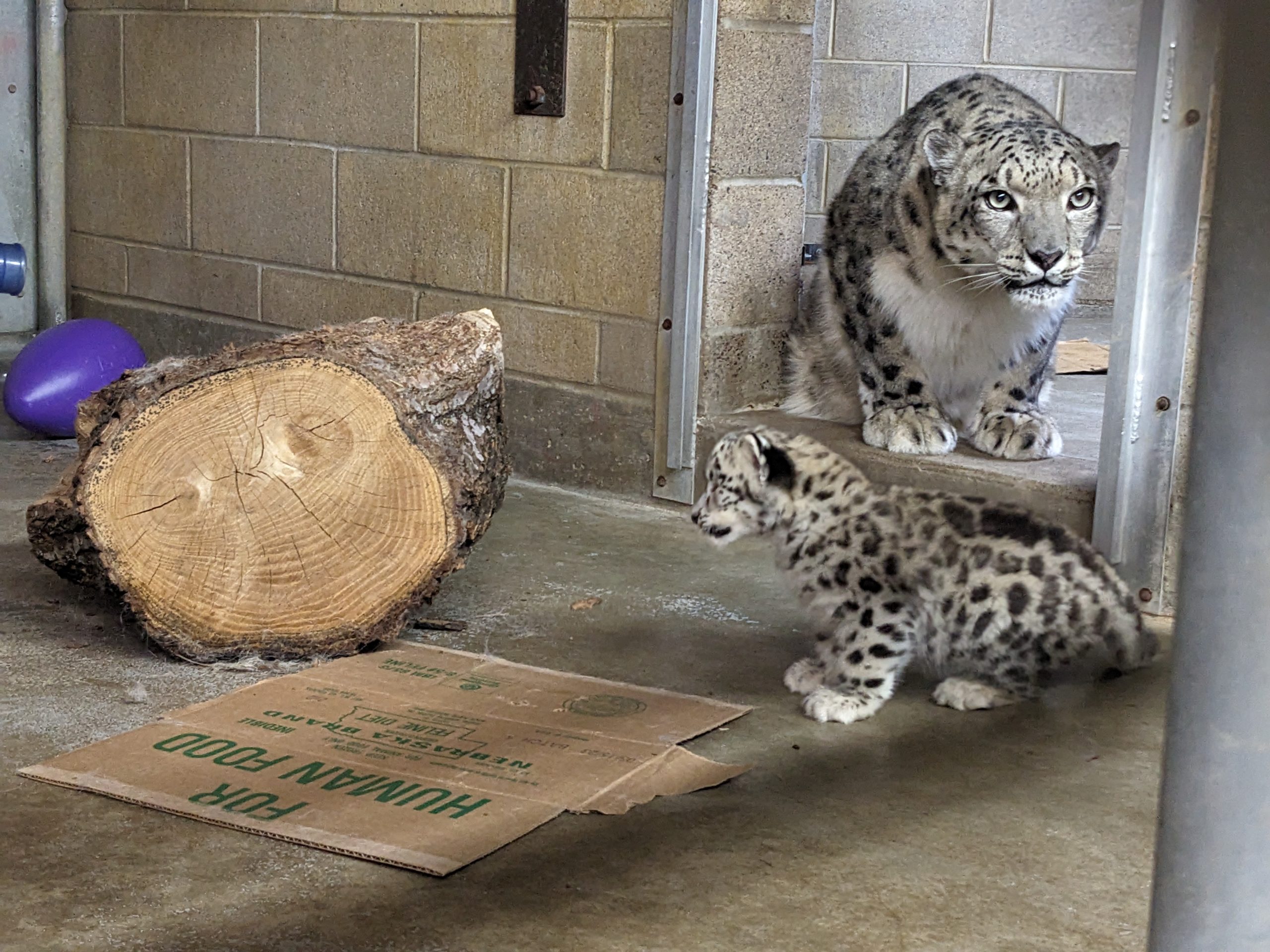

Alya’s fierce pride and strong maternal instinct are also providing keepers a hopeful sign of the long-term health prospects for the new cub, who was born with a set of eyelid abnormalities that keepers noted at her birth. Veterinary ophthalmologist Dr. Melissa Lively recently confirmed the diagnosis as Multiple Ocular Colobomas—a lack of retinal and other eye tissue—a permanent condition that can’t be reversed or repaired. “She will be blind the rest of her life,” Lively explains. “But because she’s never had vision, she’s never known anything different, and she’ll be able to do everything a normal snow leopard cub could do. We know that cats are fantastic at using their touch, their hearing, and their sense of smell to explore their habitat and run zoomies just like a visual cub would do. In the wild, this cub would not survive moving through vast environments without being able to see where prey is coming from, but in this zoo setting blind cats can thrive. Especially with all of the great care they get at Como Zoo.”
While the young cub may need surgery in the near future to prevent infection and other complications, lack of vision is unlikely to impair the longevity or welfare of the young snow leopard, now about eight weeks old and about as many pounds.
Moutig
Alya
“Baby and mom are doing great, and I don’t even know if Alya can tell that her cub has no vision,” says Jorgensen. “Six weeks is the point where snow leopard cubs start to get super active, and though she’s blind, she’s very mobile and seems to love exploring.”
An eager eater, the young cub is also busting her way through the baby growth charts. “She’s a milk-drinking machine,” Jorgensen says proudly.
While she’s hitting all of her developmental milestones, her keepers are also being mindful about ways to make her as comfortable and curious as possible as she grows into her new home. “Milestones for her agility might be pushed back a little later as she figures out the geography of her habitat,” he says. “There might be some accommodations we’ll make for her, things we’ll need to be aware of in terms of keeping her environment very consistent.’’
As part of Como Friends’ Sunset Affair fundraising gala this month, the winning bidder in the event’s silent auction will have the chance to select a name for the new cub that captures her native curiosity and fighting spirit.
“She’s getting fluffier by the day and her claws and paws are gigantic at this point,” says Jorgensen, who’s gotten accustomed to being scratched, clawed and peed on every time he scoops the new cub up for vet care and occasional weigh-ins. “It’s all in a day’s work, but it’s also a big deal to have a new snow leopard cub. Once we could see mother and baby were doing well together, there was a big sigh of relief, and now we’re just enjoying how unbelievably cute they are together.”
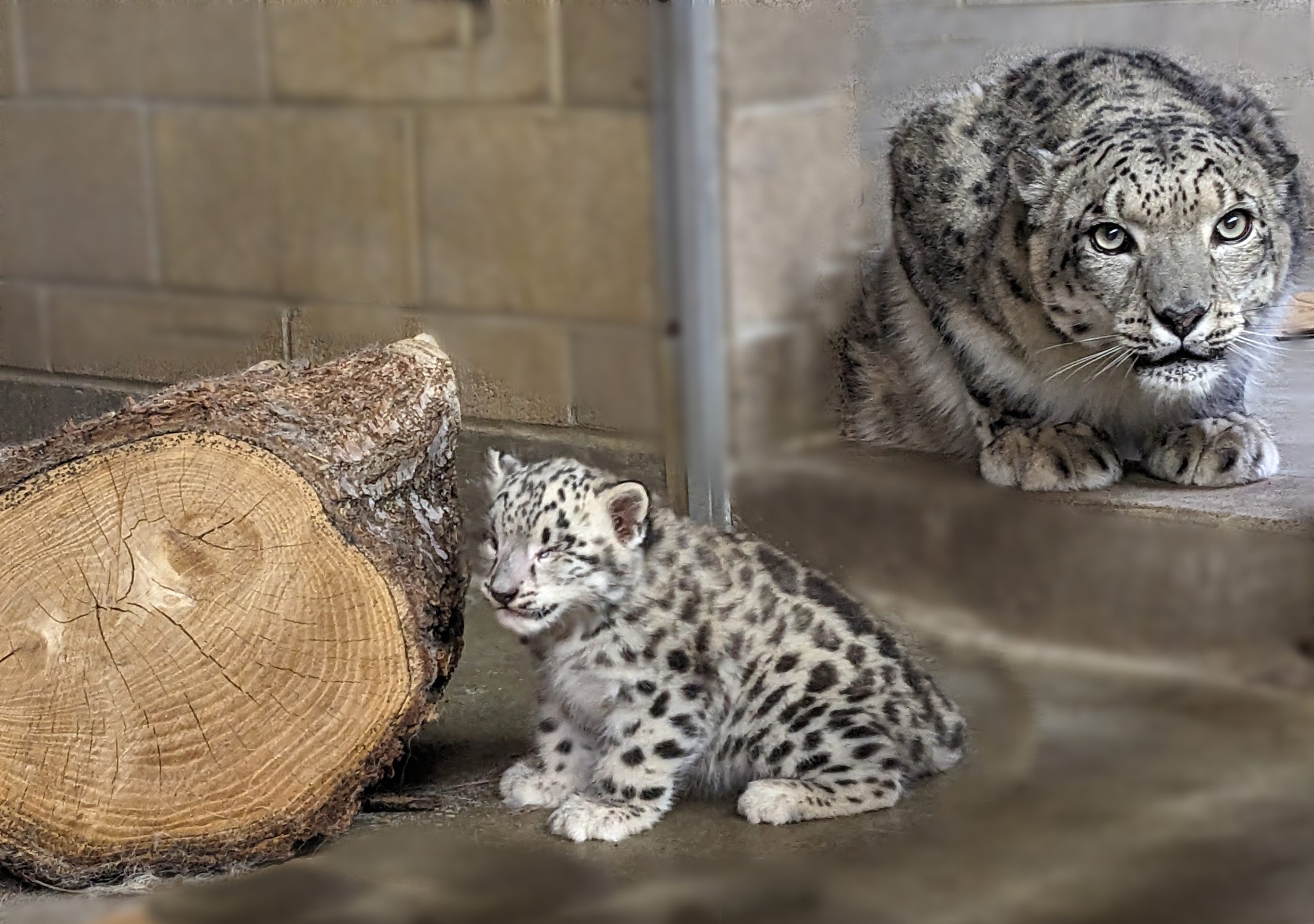
How to spend a summer day at Como… without spending a dime
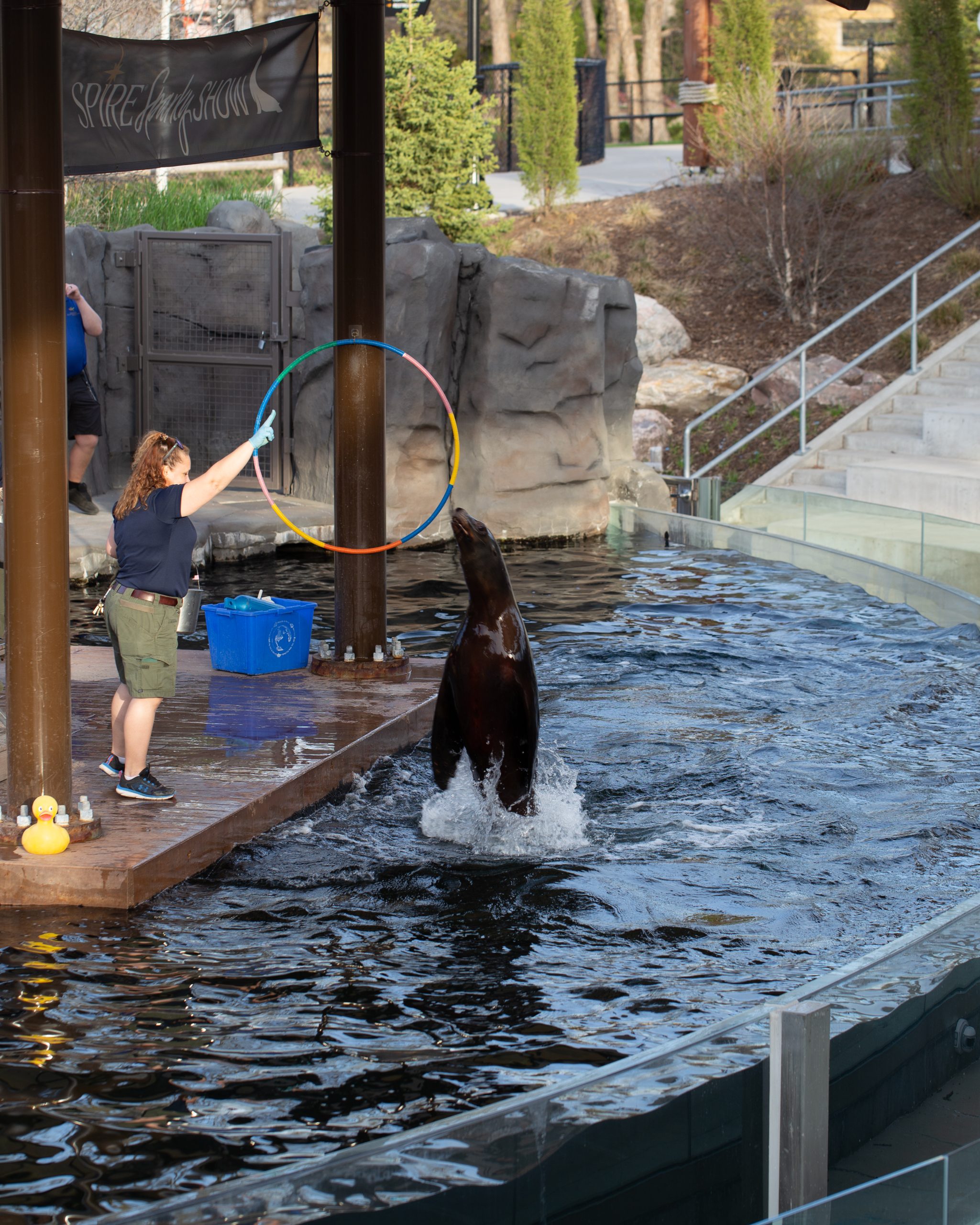
With a full roster of daily public programs and the long-awaited return of Como’s fantastic interpretive volunteers, there are more ways than ever to connect to conservation at Como Park Zoo & Conservatory. As the crowds make a comeback, here’s how to make the most of your summer days at Como, Minnesota’s most visited cultural institution. And with free admission for all, making great memories won’t cost a thing…
-

Mission Safari
Jump like a kangaroo, swing through the trees like an orangutan, and hang like a sloth in Como’s new immersive maze attraction, now open through Labor Day. Designed for kids, and fun for families, your journey through Mission Safari will make you even smarter about the earth’s amazing biodiversity.
-
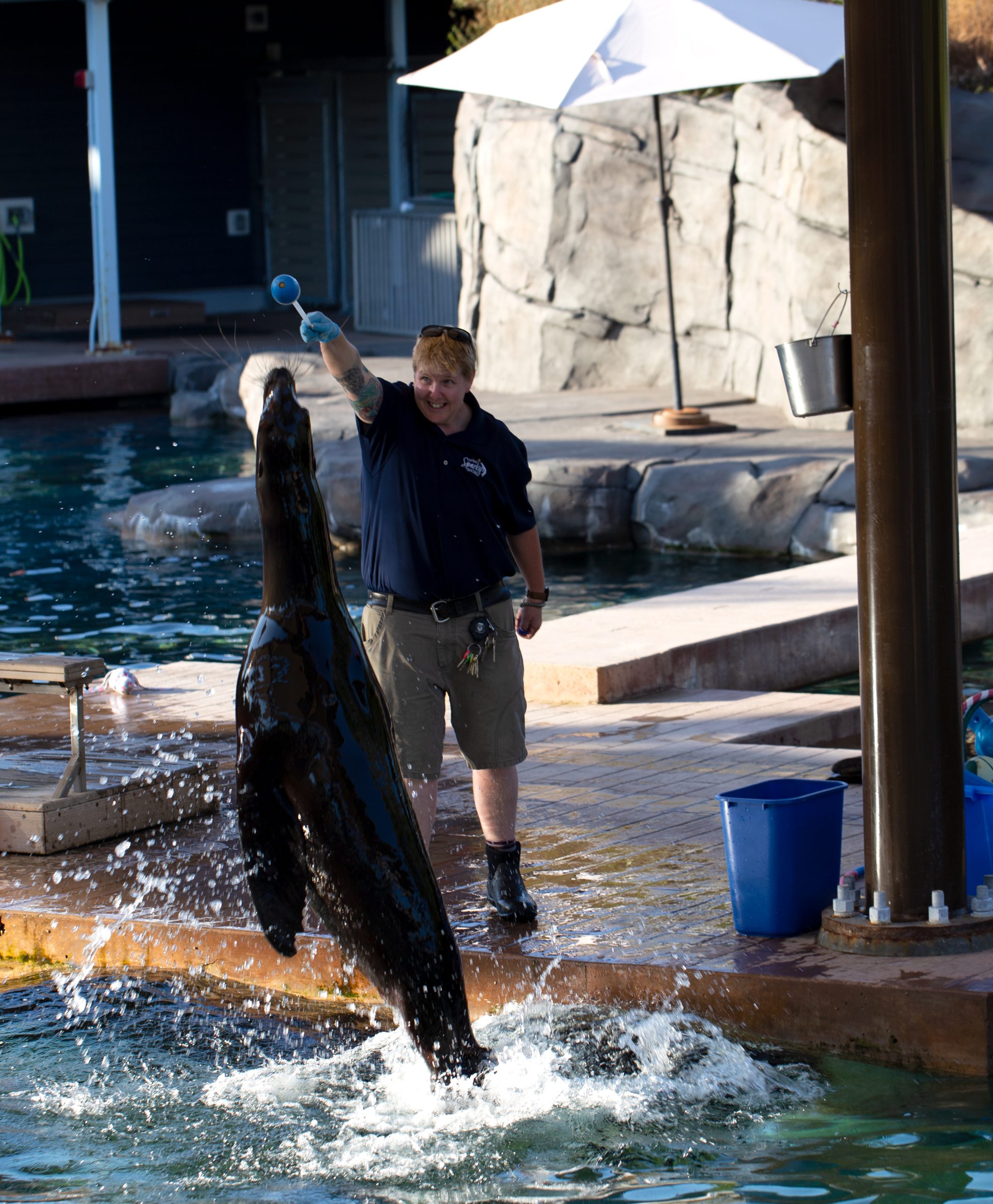
The SPIRE Sparky Show
A Minnesota tradition since 1956, the new Spire Sparky Show has been reimagined for a new generation, with an even greater focus on conservation, and lead roles shared by all six boisterous and high-energy residents of the state-of-the-art habitat. Check it out daily at shows at 11:30 a.m. and 2:30 p.m.
-
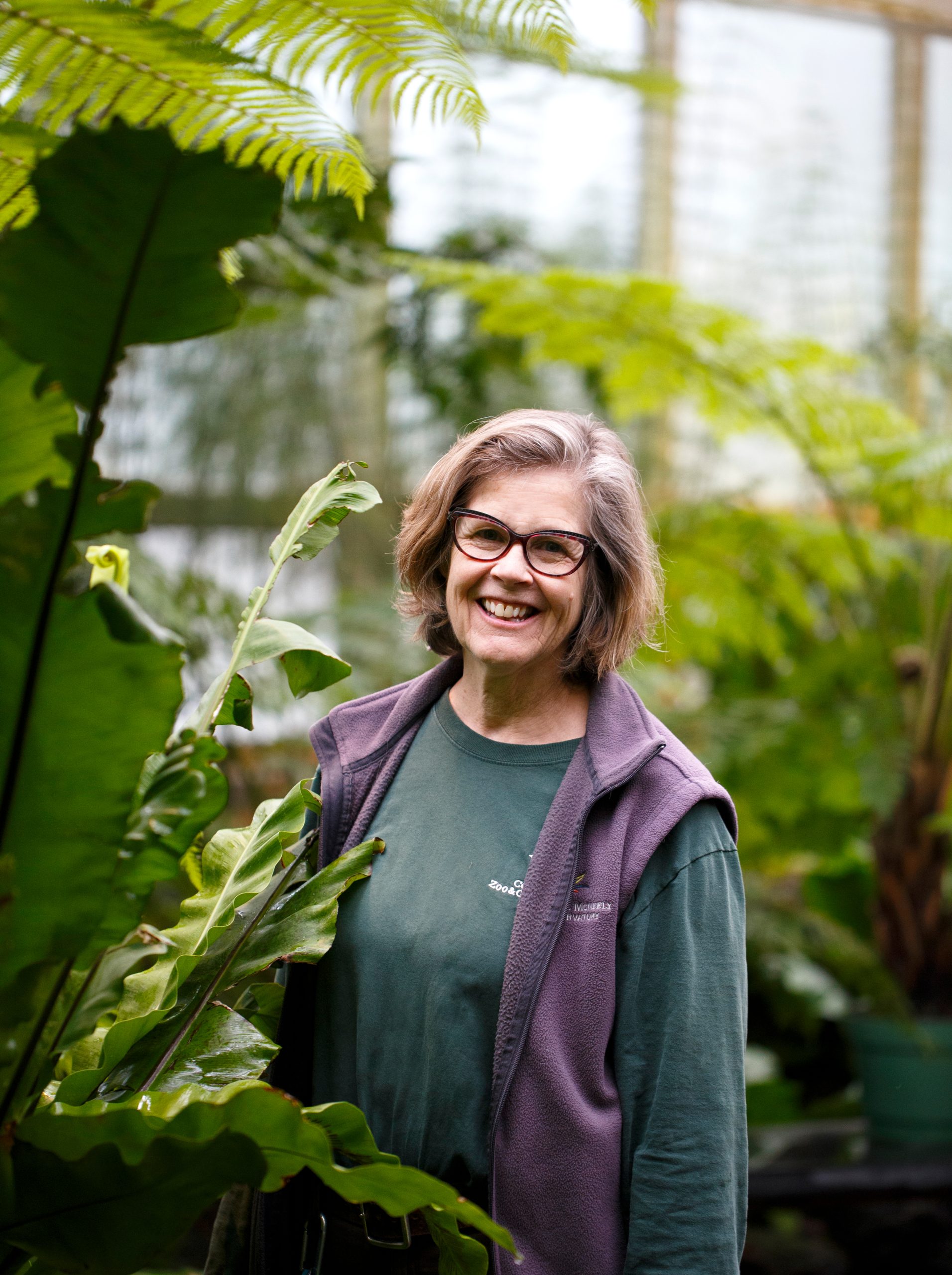
Keeper and Gardener Talks
Meet and learn from the people who know Como’s plants and animals best during these engaging, small group experiences. With a daily keeper talk at 11 a.m. and a gardener talk at 1 p.m., listen to the Como public service announcements to find out where the day’s talks will take place.
-
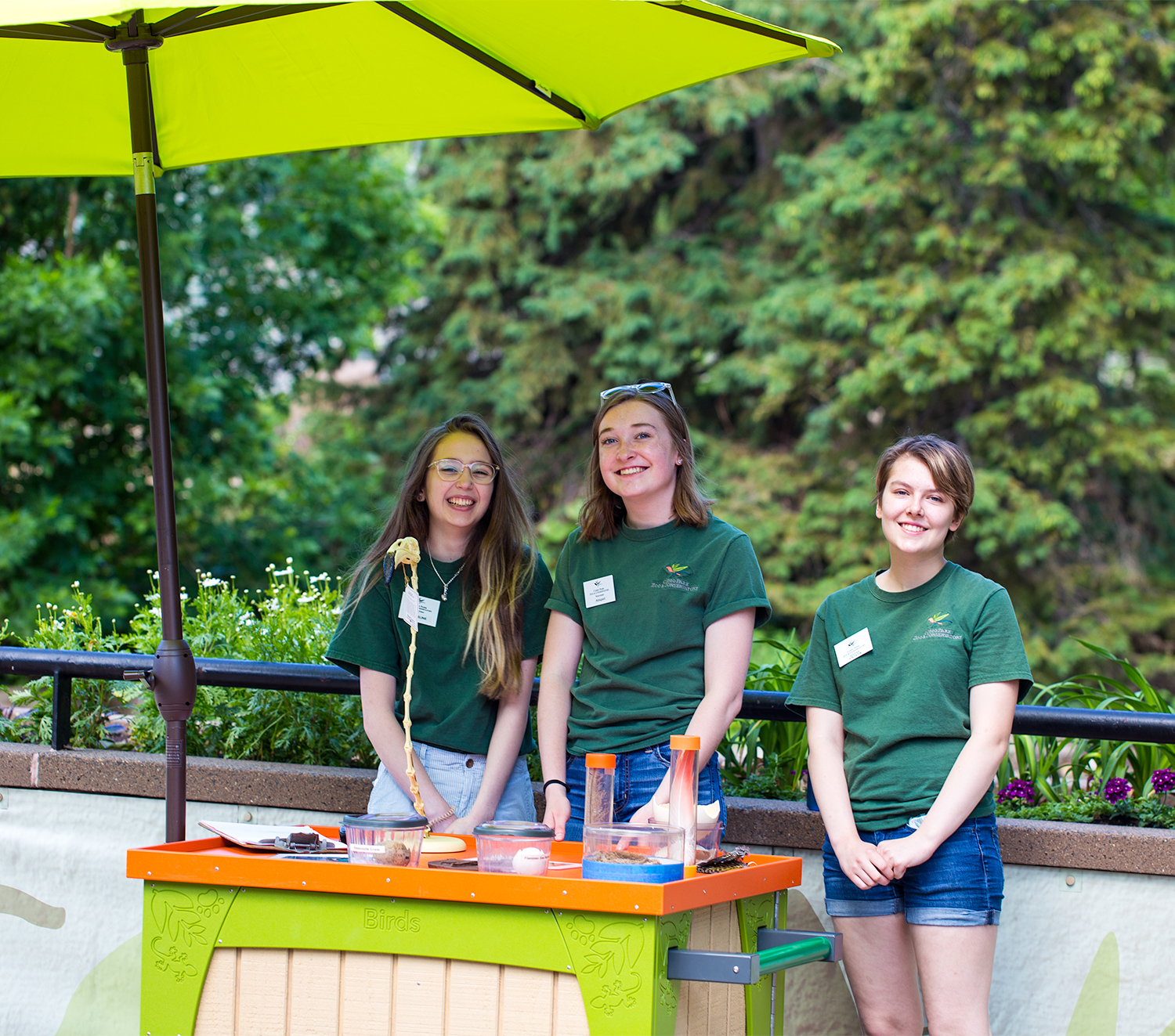
Nature Walk
Those talented teenage interpreters you may meet around campus this summer are part of Como’s popular Nature Walk program. Selected through a competitive process, these young volunteers receive special training to teach Como visitors even more about our animals and plants. They also make conservation look cool—especially for our younger visitors. Every year, Nature Walk volunteers help to bring more than 200,000 visitors a little closer to Como’s natural collections.
-
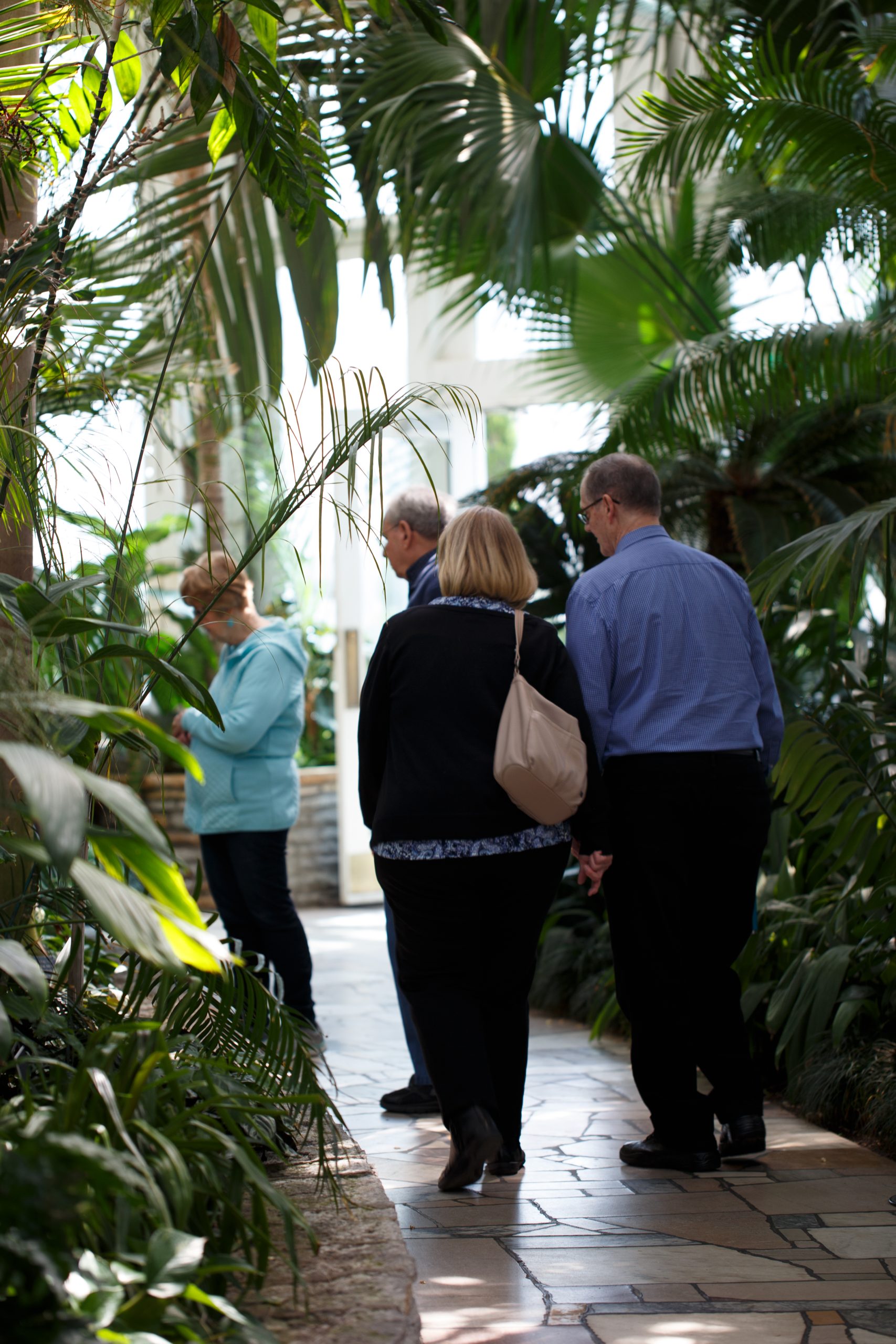
Senior Strolls
Get fit and make new friends at one of these early access mornings, specifically for the 55+ and up crowd. Visit Como’s website to register in advance for June 21 and more upcoming dates.
-
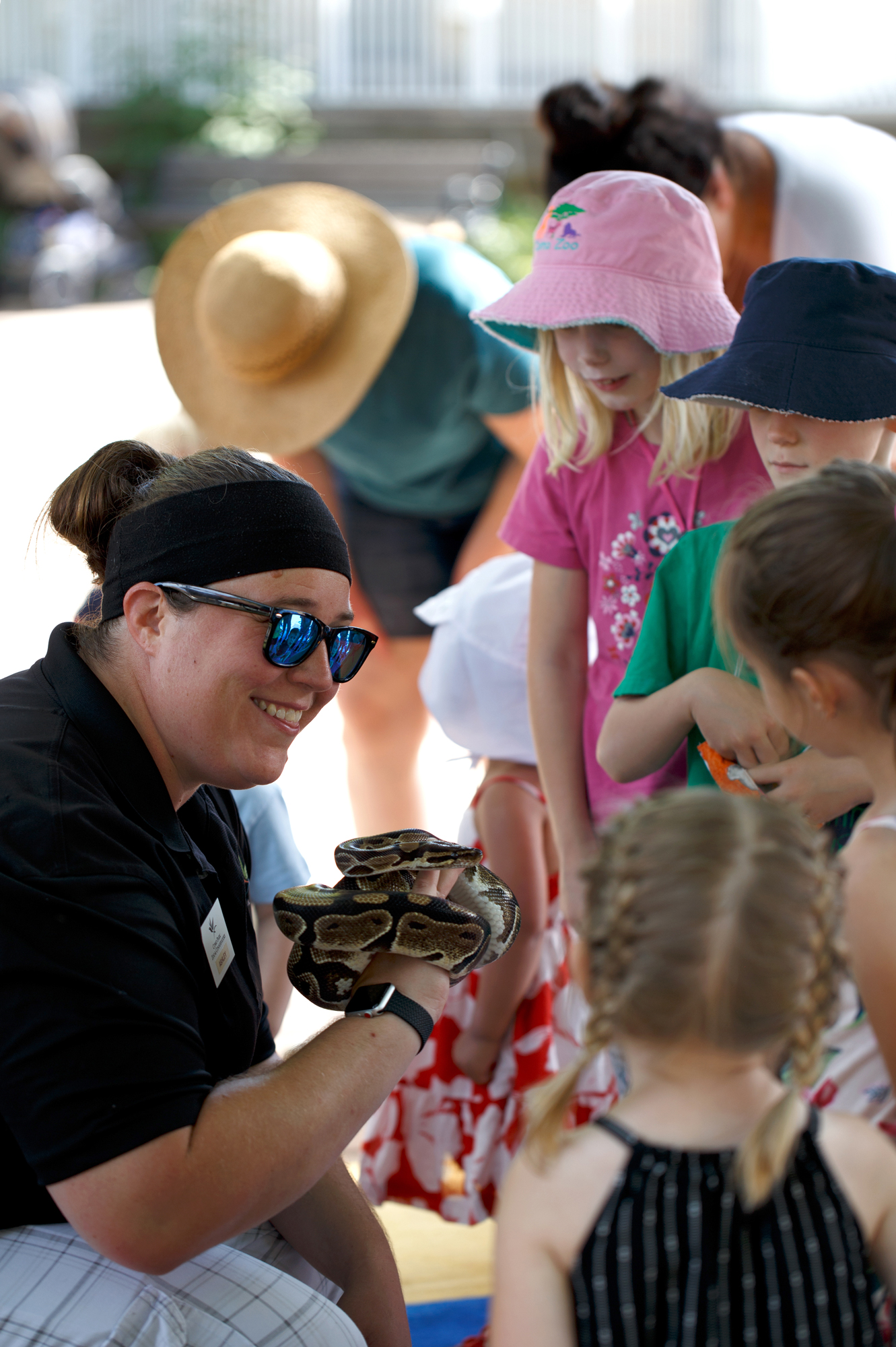
Lil’ Explorers
Free every Thursday from 10 a.m. to noon, Como’s Donor Plaza (or in the Visitor Center during inclement weather) becomes a fun conservation station for preschoolers, with storytime, hands-on activities, and nature themes including Night Time Animals on June 22, Animal Families on June 29, Junior Gardener on July 6 and Bird Buddies on July 13.
-
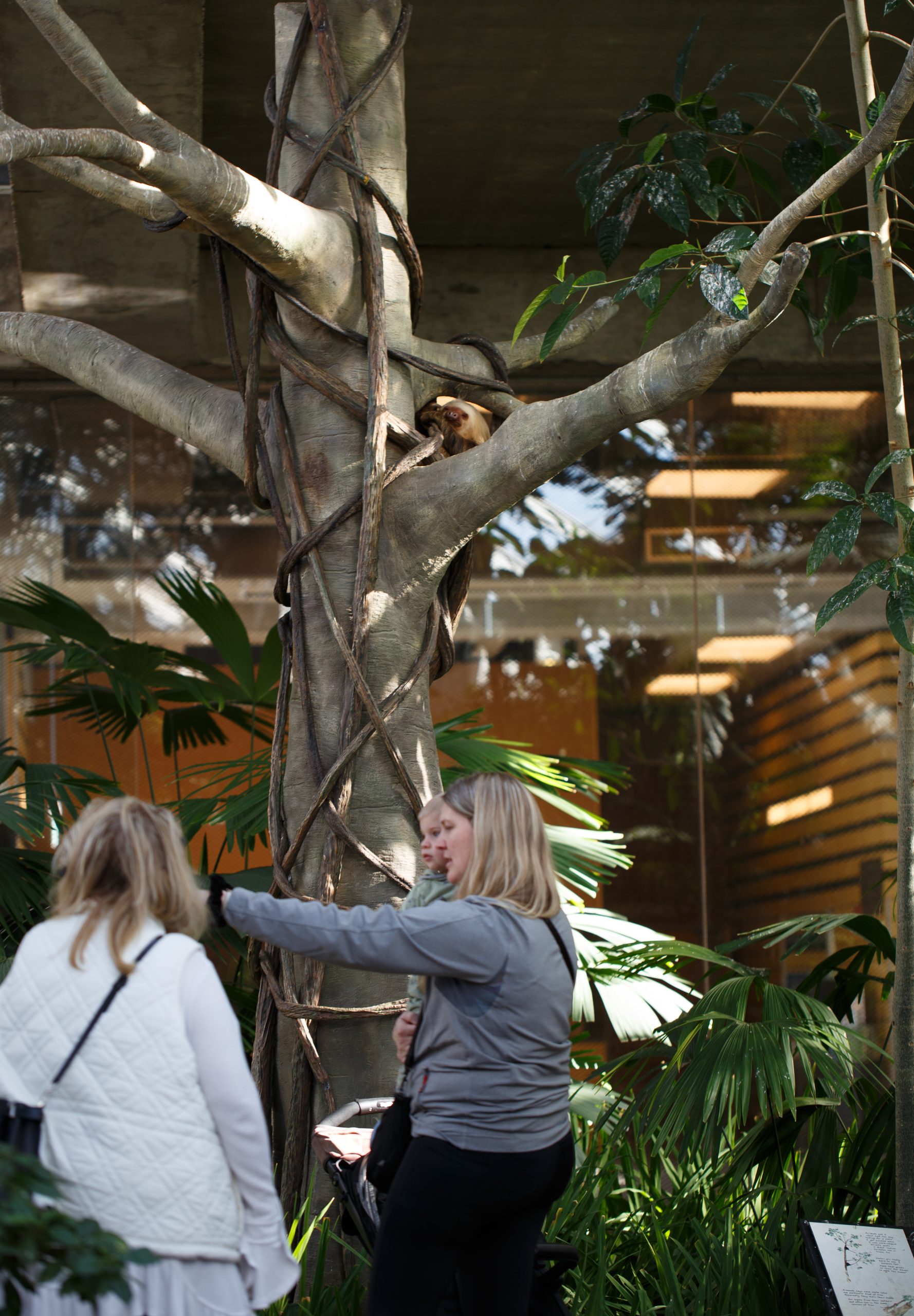
Sensory-Friendly Early Entry
Developed in partnership with the Autism Society of Minnesota, these early morning entry opportunities allow visitors to explore Como without the crowds, along with a social narrative to prepare guests for what they’ll see, hear and smell during a morning at Como. Visit Como’s website to reserve a spot for upcoming dates, including July 9, August 13 and September 10.
-
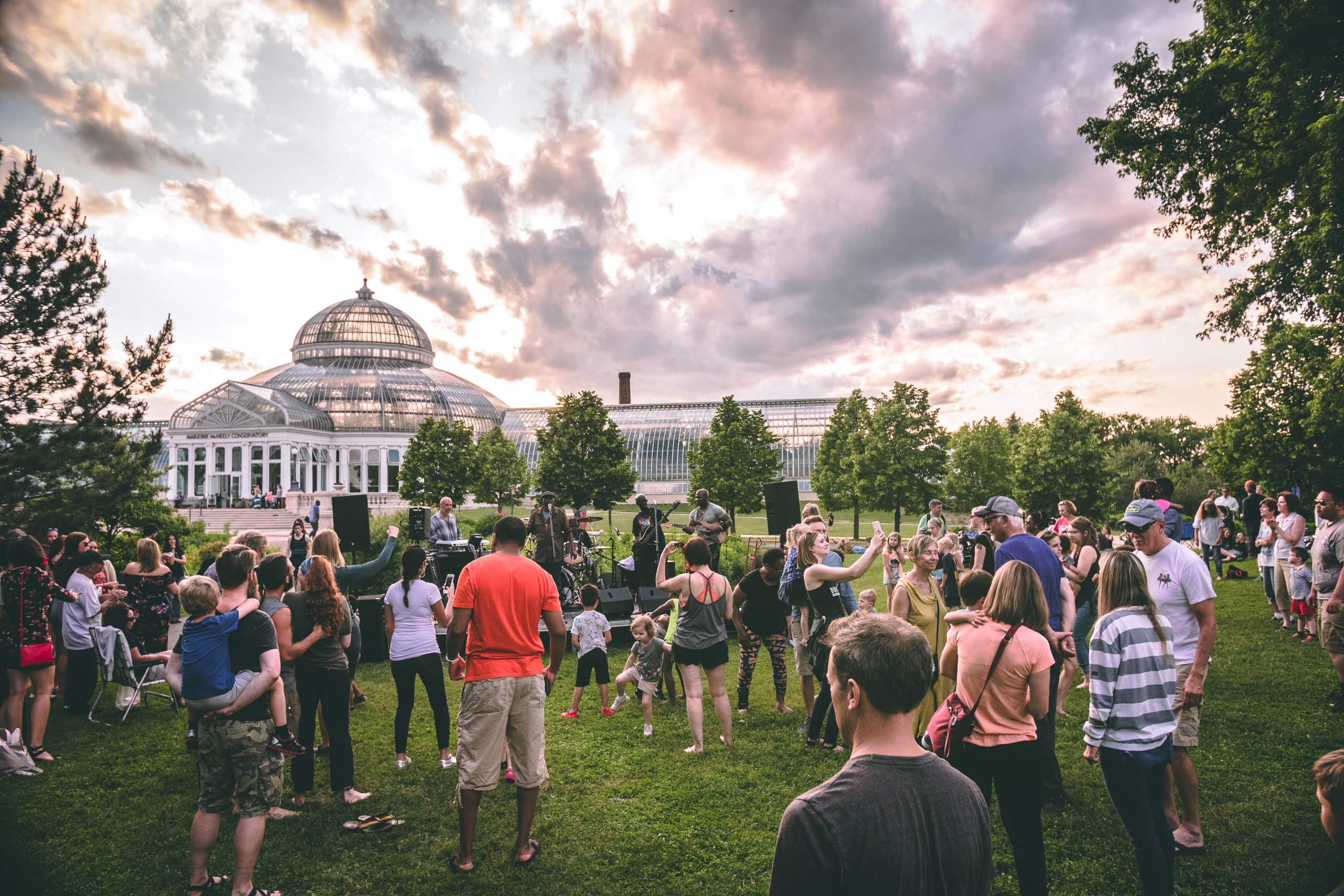
Groovin’ in the Garden
Pack a picnic and prepare to shake your groove thing at the Twin Cities’ favorite family-friendly concert series. With fun activities for kids, and a fantastic lineup of local favorites, you’ll want to put this Wednesday concert series into regular rotation. Upcoming concerts include Ty Pow & The Holy North on June 21; Red Eye Ruby on June 28; and FLOWTUS on July 5. Held outdoors in front of the Marjorie McNeely Conservatory, hot dogs, ice cream treats, beer and wine are also available to purchase.
-

Cafesjian’s Carousel
A Minnesota tradition that just keeps turning, Como’s historic carousel is now open through Labor Day, from 11 a.m. to 4 p.m., offering free rides on June 27, July 25, August 29 and September 26.
By removing economic barriers to career-building experiences, Como’s new apprentice program is working to build a more diverse future workforce
For the last year, college junior Joshua Lee has been trying his hand at a variety of zookeeping jobs at Como, from caring for the zebras in the hoofstock building, to climbing in with the penguins to take a crack at cleaning the rock work.
“That’s not easy,” Lee admits. “When the penguins are nesting, they’re very protective of their space.”
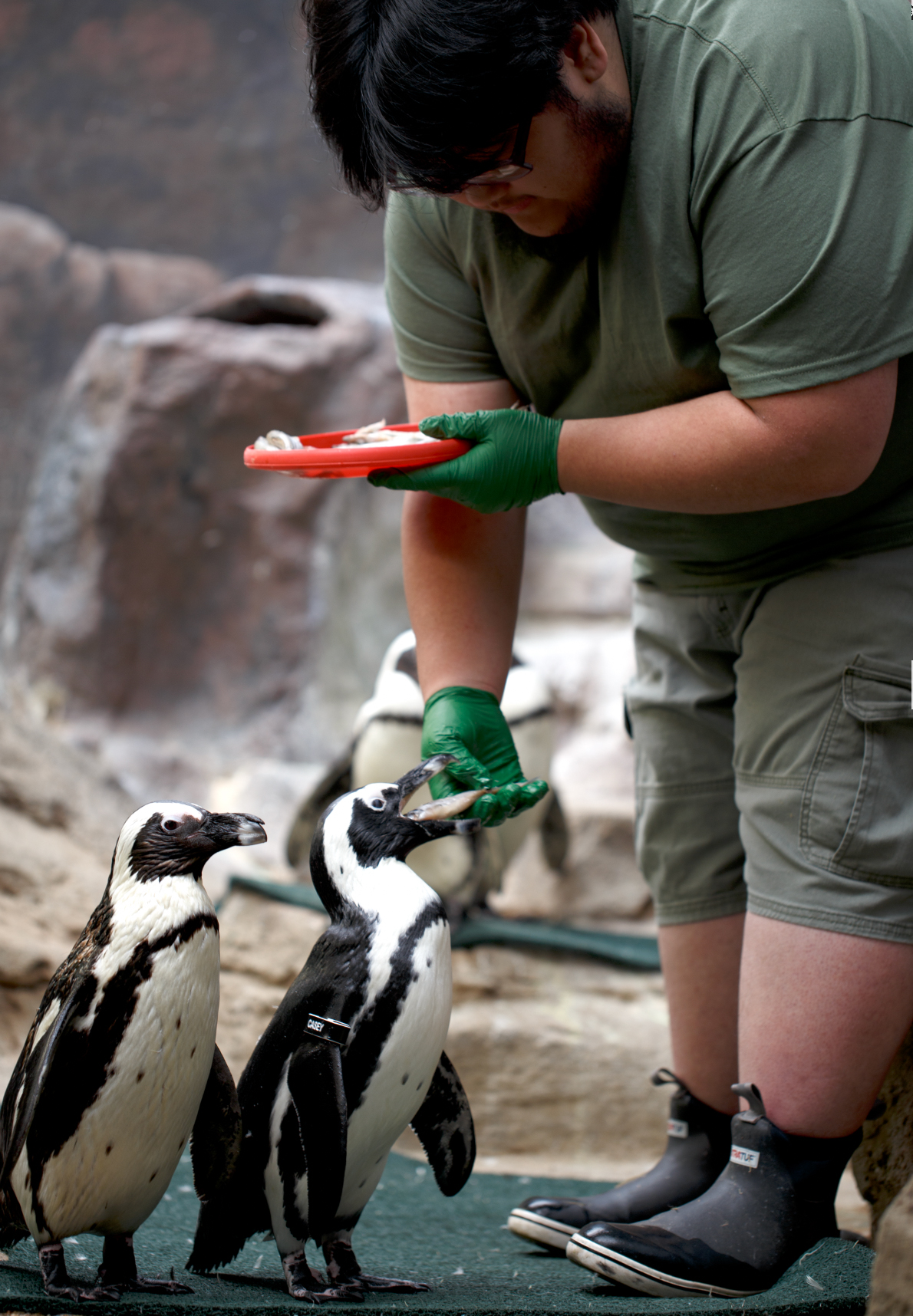
As Lee returns to college for his senior year, he says his experience at Como has given him many new options to consider. “I still don’t know what I will want to do after I graduate, but what I liked about zookeeping was that every day was a different day, and I had a chance to work with so many different animals,” he says.
A zoology major at Minnesota State University, Mankato, Lee is curious about the career paths available to him in animal care. Getting the chance to see the inner workings at a zoo has historically required signing on as a volunteer or an unpaid intern—a traditional career path that can be a major barrier to young people who can’t afford to take time away from paid employment. But over the last year, Lee has been earning money and learning about his future options as part of Como Park Zoo & Conservatory’s new paid apprentice program through the City of St. Paul’s Right Track program.
Mayor Melvin Carter’s youth employment initiative, Right Track engages nearly 1,000 young people from cost-burdened homes throughout Saint Paul in a variety of internships. Launched in 2014 through a partnership between the City of Saint Paul, the Saint Paul Public Schools and the Saint Paul Area Chamber of Commerce, the program’s goal is to establish a pipeline of career development opportunities for Saint Paul youth.
Como’s campus managers helped launch the program at Como in 2022, but the program has been in the works for several years, creating a new, fully paid pipeline for young people who are interested in zookeeping and animal management careers. “The program is also designed to ensure that youth don’t have to work multiple jobs to take advantage of an internship opportunity,” says Lianna Sanders, the Como project manager who oversees the Right Track apprentices. “During the school year, they work 20 hours a week, and during the summer months it’s a full-time job for these apprentices, who also take part in professional development training that’s part of the program.”
Right Track operates out of the City of Saint Paul Department of Parks and Recreation, building on the department’s long history of providing youth development and employment opportunities for Saint Paul youth. While Right Track apprentices at Como are paid minimum wage, a partnership with Como Friends also helps to pay for the gear that apprentices need to be successful on the job, like uniforms and sturdy boots.
“Como’s audience is incredibly diverse, and it’s important to be recruiting a workforce that reflects the surrounding community,” says Como Friends president Jackie Sticha. This summer, Como will say goodbye to Joshua who completed the program this year and Gil and Gabby will stay on and continue with their work here as Como welcomes additional Right Track apprentices for roles in both animal and plant care at Como Zoo and the Marjorie McNeely Conservatory.
As Lee returns to college for his senior year, he says his experience at Como has given him many new options to consider. “I still don’t know what I will want to do after I graduate, but what I liked about zookeeping was that every day was a different day, and I had a chance to work with so many different animals,” he says.
To learn more about the Right Track program, visit here.
From animal transport to medical treatments, spring is a busy season at Como Zoo
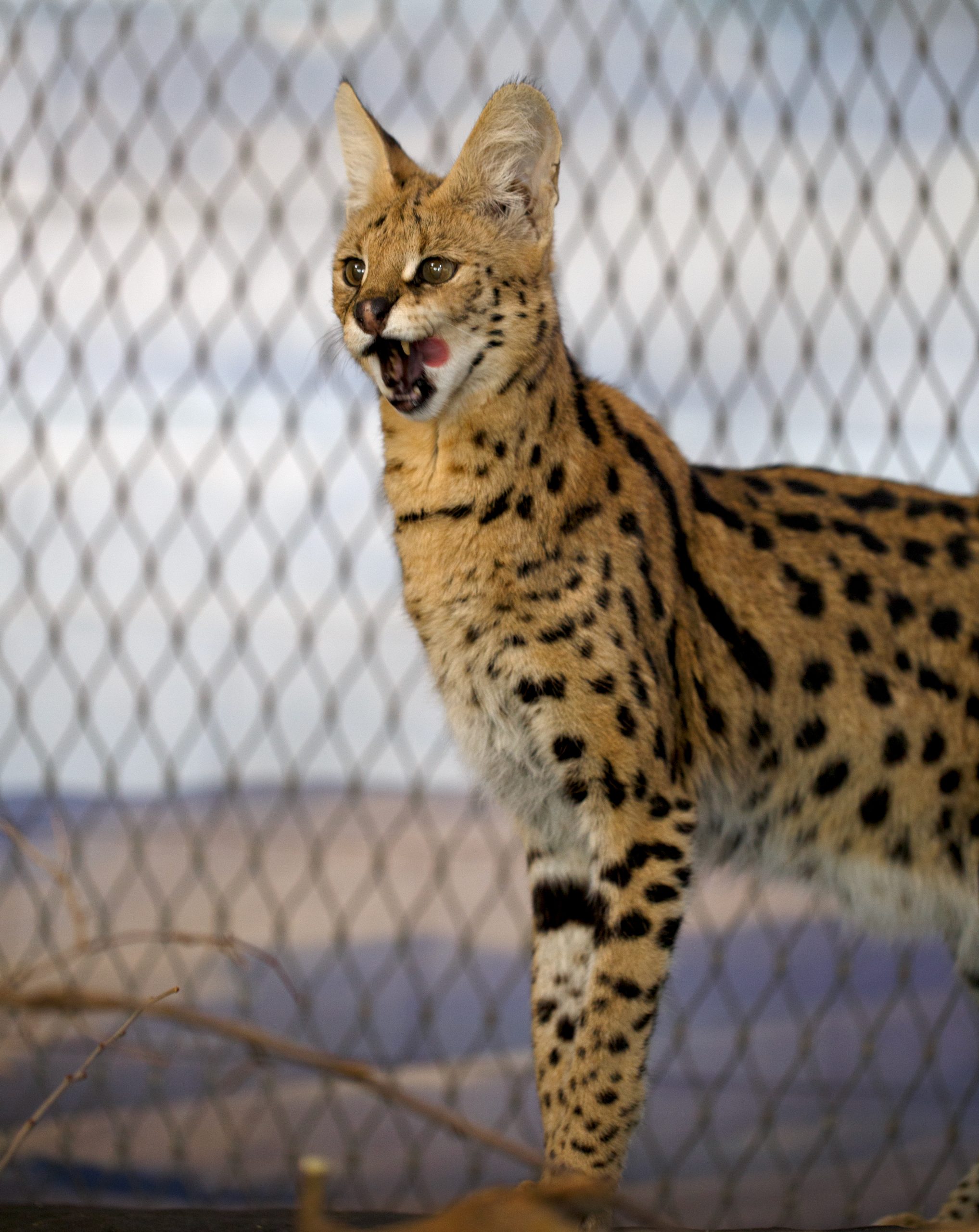
Humans aren’t the only species that seem to get a spring in their step when the weather turns warm. Jill Erzar, a senior zookeeper at Como Zoo, believes animals anticipate spring just as we do.
“It seems like animals are always a little more excited this time of year,” she says. “The ice has thawed, there are new smells in their habitats, and of course, many more visitors.”
On your next visit to Como, you may notice some changes, as zookeepers take advantage of the spring weather to welcome new animals, say goodbye to old friends, and provide best practice veterinary care to animals. Here’s a look:
-
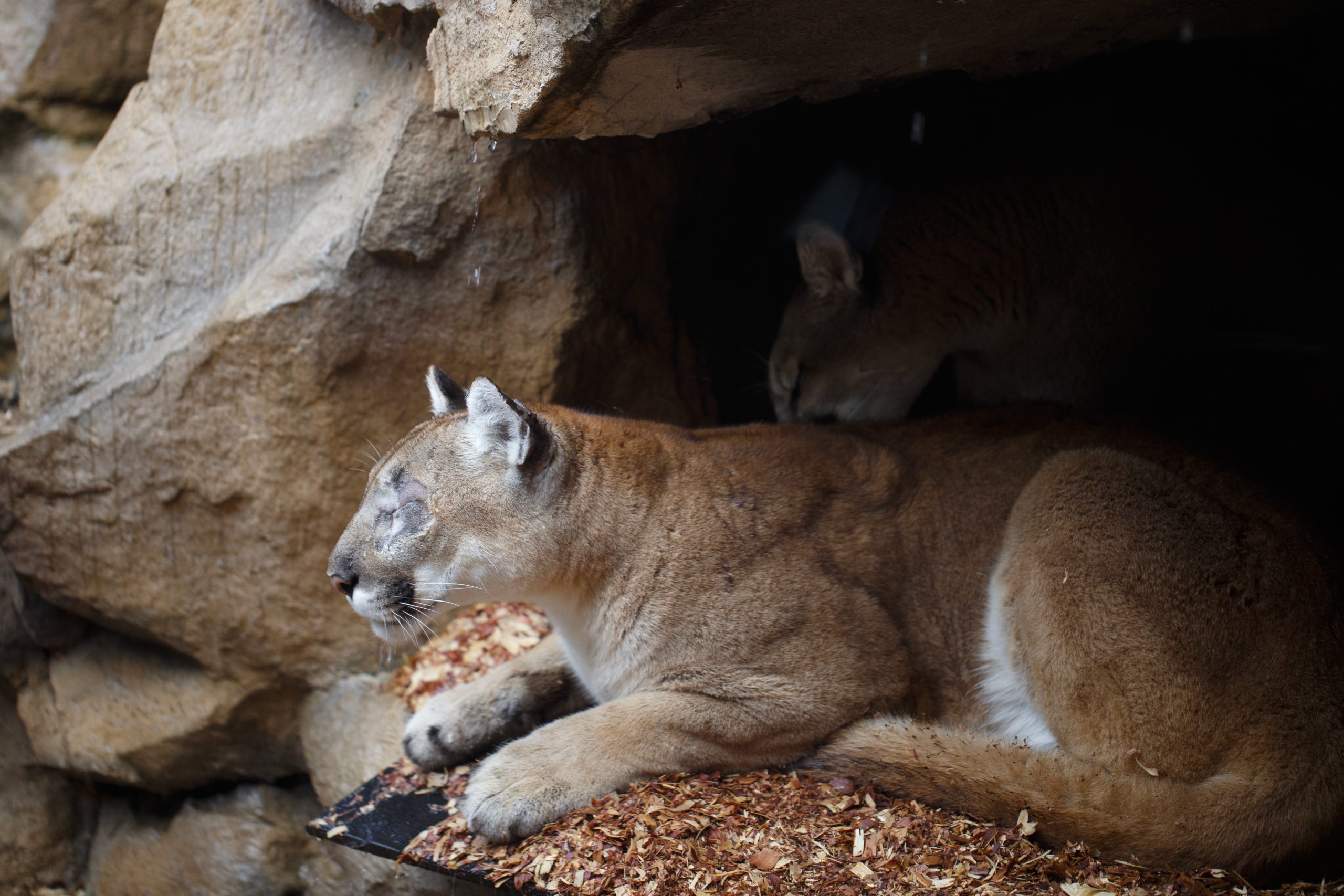
A New Way to Navigate:
Though he’s blind, 4-year-old Jasper the cougar has no problem navigating his habitat at Como Zoo. But when complications from progressive retinal atrophy were causing additional health problems and discomfort for the young animal, zookeepers made the difficult decision, in partnership with veterinarians, to remove his nonfunctioning eyes during a successful surgery you may have heard about here at MPRNews and here at FOX9. Now back in his habitat, Erzar says, “Jasper may be more cautious at this point moving around, but his activity will likely appear normal since he was unseeing prior to the surgery and was accustomed to his habitat.”
-
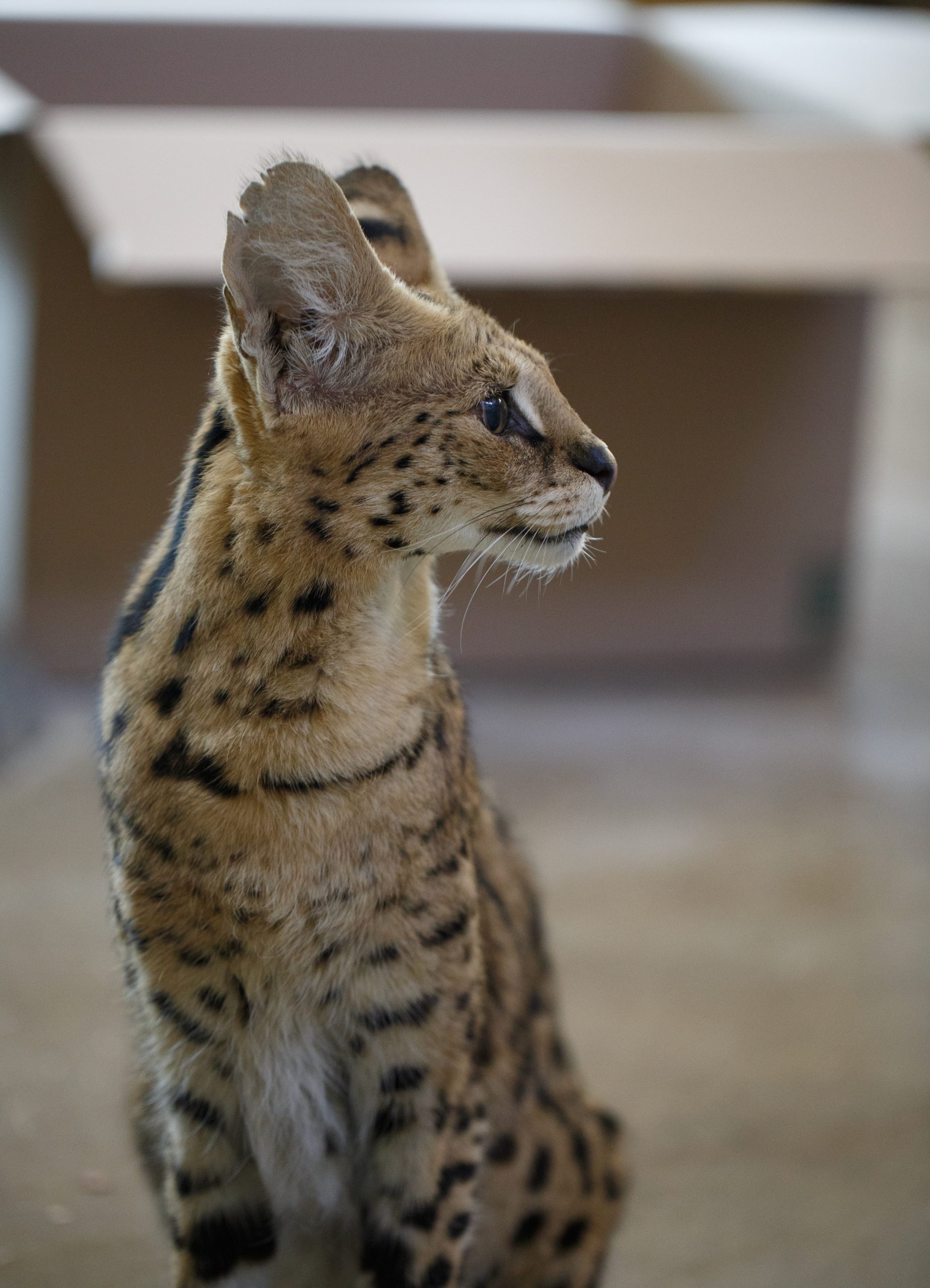
Living Out Her Golden Years:
There’s another new face in the large cat building—Lily, a 19-year-old serval. A long-time resident of Bismarck’s Dakota Zoo, Lily moved to Como in March where she will live out her golden years. “We had the space and the capabilities to give her a quiet retirement home while sharing her story with our visitors,” says Erzar. “At 19, she’s at the top of the age range for her species,” but keepers report she’s thriving in her new habitat.
-
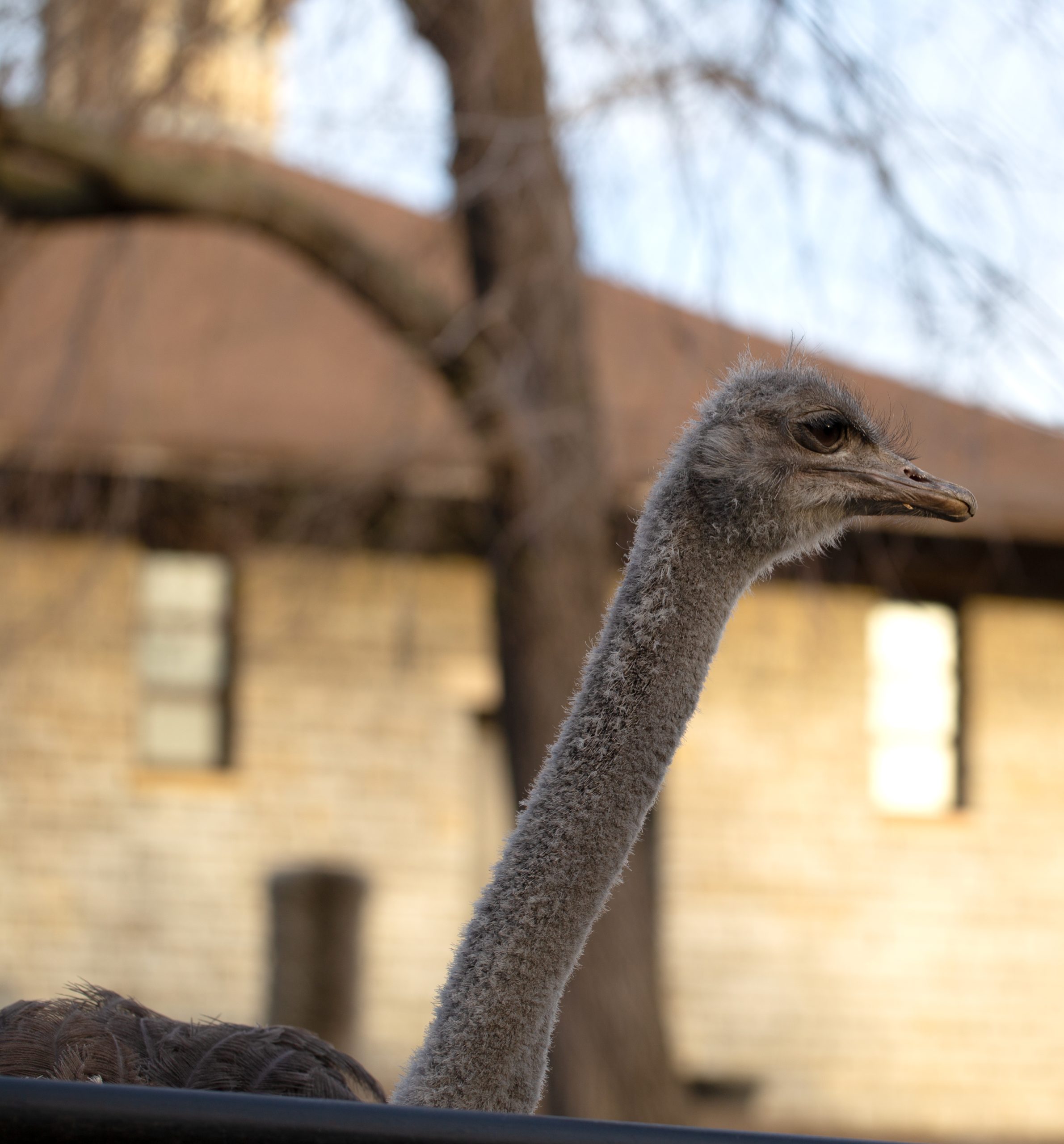
Ostrich in the Old Barn:
Como’s Old Barn has historically been the home of cold-weather animals like bison and Arctic fox. But this summer, two new ostriches will take over the space previously occupied by Forest the reindeer, who has joined a herd of male reindeers at the Minnesota Zoo. The young ostriches, both hatched last August, will eventually join Pickles the ostrich, who shares a habitat with Como’s giraffe herd at the African Hoofstock building.
-
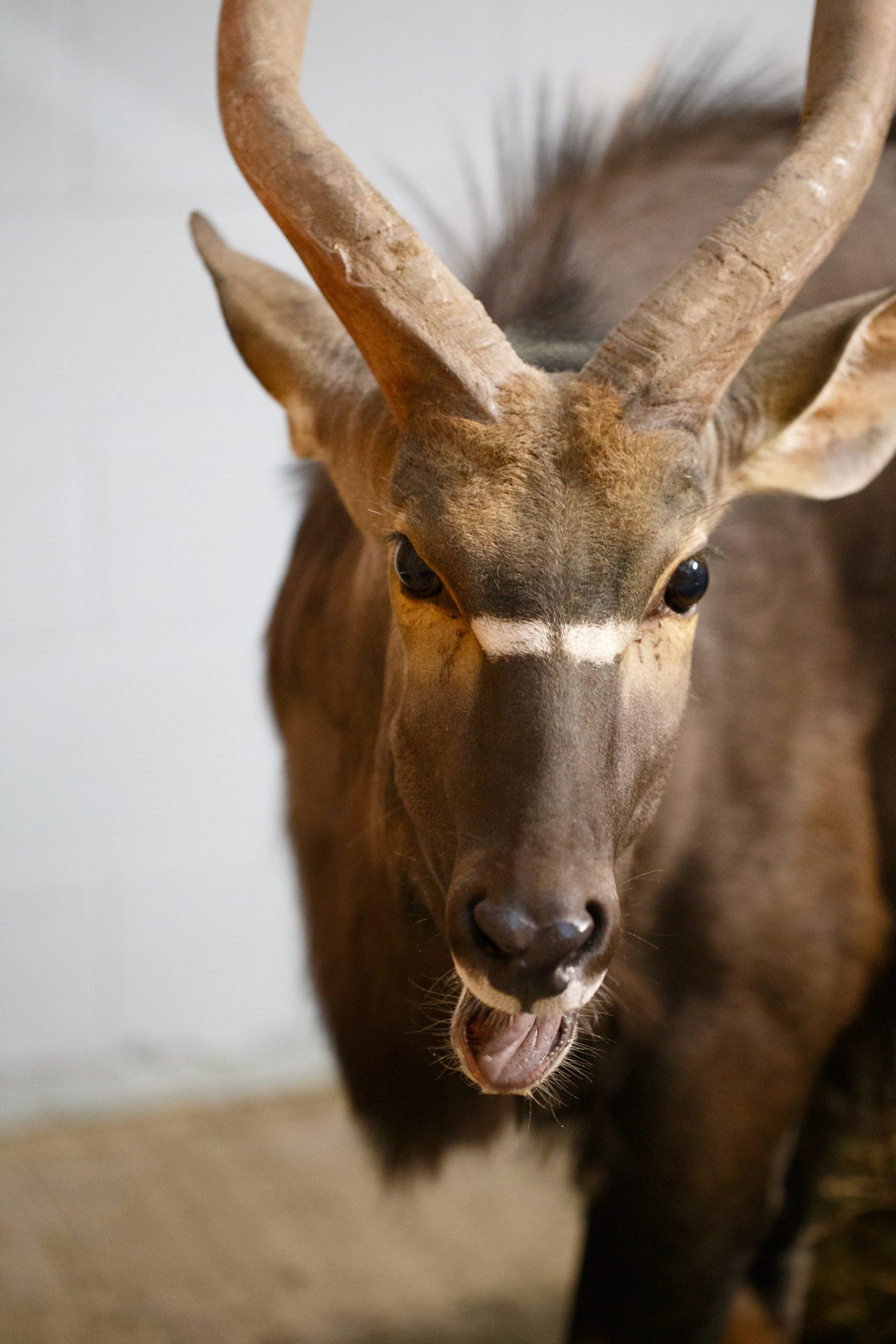
Warmer Climes for Kudu:
While Como Zoo has had years of success breeding lesser kudu, Minnesota’s long, cold winters have never been the ideal climate for these African antelopes. “Lesser kudu are wonderful animals, but they’re freeze babies, and they don’t like to be outdoors when temps drop below about 55 degrees,” says Erzar. “They’re also very nervous animals, and though we’re a small zoo, we have a very large visitor base that’s not ideal for them.” To promote their welfare, Como’s lesser kudu have moved to warmer climes, while a breeding pair of nyala are moving in. Another breed of African antelope, but with long flowing hair, Erzar says, “they’re known for being more cold tolerant and less stressed by human interaction.” Look for male Stanley to make his Como debut within the next week, while female Stevie will join him later this summer.
Outstanding veterinary care can prolong the lives of animals like Daisy the giraffe. But for Como Zoo keepers, humane animal care can also make for heartbreaking decisions.
With more than a thousand animals of 215 different species in Como’s care, death is part of the natural life cycle at Como Zoo. Even so, recent months have felt especially challenging, as Como Zoo said goodbye to two iconic animals well known to and beloved by the public.
Last week, keepers made the difficult decision to humanely euthanize Daisy, a 23-year-old reticulated giraffe, who had been suffering from severe degenerative arthritis. A few months earlier, Como lost another beloved animal ambassador, 46-year-old orangutan Amanda, who was diagnosed with an inoperable abdominal mass that was causing chronic damage to her kidneys.
“Daisy was a strong, beautiful matriarch – quick to judge and slow to accept her human coworkers,” says Como Zoo senior keeper Jill Erzar. “She was a fierce and protective mother who would do anything to keep her calves safe. She was an extraordinary ambassador for giraffe, helping us connect visitors to her wild counterparts by telling her story.”
A fixture at Como Zoo, famous for her art work and her flair with textiles, Amanda the orangutan, who died at 46, was the quintessential animal ambassador, a gregarious great ape who helped to personalize nature while inspiring visitors to protect it.
Losses like this are hard on the whole zookeeping staff, says Erzar. “But being transparent about these events is an important way to tell the public about how much effort goes into life and death decisions about animal care,” she says, noting that there’s an even longer list of Como Zoo animals whose lives were saved or improved by major interventions over the last year. Below is a look at a few of them:
Dental Surgery for Tsar: A few years ago, Tsar the tiger went into cardiac arrest during a root canal and nearly died. “Dr. Fausto Bellezzo, our veterinarian at the University of Minnesota, jumped on him and did the most heroic CPR to bring him back,” says Erzar. “But we were very hesitant to immobilize him again.” When it became clear Tsar needed the procedure again in October, Como consulted with a team of tiger experts to help minimize the high risks of putting large cats under anesthesia, preparing for “every possible scenario we could imagine,” says Erzar. With 17 keepers and specialists assembled, this year’s procedure went “like clockwork,” and the 9-year-old tiger is back on the prowl.
Hormone Therapy for Forest: When they’re growing, reindeer antlers are covered in a complex vascular network called “velvet” that sheds as the antler hardens. But without the usual surge of male hormones required to boost the process, Forest’s antlers bled extensively, causing the castrated reindeer to collapse on exhibit last year. “Como vet tech Andrea Persson raced in and got a tourniquet on him right way,” says Erzar. This year, keepers found a much simpler solution—a short-term hormone implant that’s helped the reindeer develop and drop his antlers according to schedule.
Cataract Surgery for Gomez: One of the longest-lived spider monkeys at Como, 31-year-old Gomez was also one of its most recognizable, coming directly up the bay window of his habitat and shading his eyes to get a better look at visitors. “For decades, he had cataracts that were infringing on his vision, and that was his unique way of dealing with light sensitivity,” explains primate keeper Em Brunmeier. In March, Gomez had successful cataract surgery that will allow him to see well into his golden years. “We still see him shade his eyes at times, but it’s more of a reflex or a little salute at this point,” says Brunmeier.
Helping Jasper Navigate: Orphaned in the wild and brought to Como Zoo in 2018, mountain lions Jasper and Ruby have always stayed close together, and this year, a medical exam may have found the reason. “Jasper has progressive retinal atrophy, retinal tissue that either never forms or is not connected quite right or is lost over time,” says Erzar. Knowing more about his visual impairment has helped keepers develop a better plan for his care, which will involve keeping him outdoors where he’s most comfortable. “We are very lucky he has Ruby and they are close, because we do see her help him out,” Erzar says, adding that while his functional blindness won’t hurt his quality of life, it may help visitors feel more connected to the cougar. “When you see an animal that’s dealing with a challenge that a lot of humans face as well, it helps build that connection and that empathy about what humans and animals have in common.”
Polar bears are loners by nature, but for most of his life, Como Zoo’s Neil was part of a permanent two-some with twin brother Buzz.
When Buzz died two years ago at the age of 24, zookeepers wondered whether Neil—already one of the oldest living polar bears in North America—would thrive. But if you’ve noticed the 1,000-pound bear frolicking in Polar Bear Odyssey’s deep pool this year, there’s no question that Neil seems to be enjoying his new life.
“Neil is doing just great,” says keeper Kristin Nelson. “He actually seems like a much younger bear than he used to, like he’s gotten some years back. He’s so much more lively now.”
A good part of the credit goes to Neil’s two new roommates, Nan and Kulu, and to the Como Zoo aquatics keepers whose carefully orchestrated introductions backstage in Polar Bear Odyssey have helped to keep all three bears calm and healthy through what could have been a stressful transition time. “They’ve all become such good companions that they’re a lot of fun to watch,” says Nelson.
The process started back in March 2021, when Como Zoo welcomed Nan, short for Nanuyaak, 28, a female bear originally orphaned in the wild near Barrow, Alaska. A seasoned traveler who’d lived in zoos from Toledo to Tacoma, Nan had no problem making herself at home in Polar Bear Odyssey, where she and Neil were soon snuggling together (Nan and Neil will be celebrating their birthdays on Friday, December 9).
Roommate relations got more complicated in November 2021 with the arrival of Kulu, a young bear who celebrated his third birthday on November 28. “When Kulu first arrived, we honestly weren’t sure we’d ever be able to put him in with Neil. Even though Neil is bigger, Kulu is a young, intact male and we just didn’t want to risk Neil getting hurt,” Nelson says. But over time, their behind-the-scenes introductions went so well that keepers were confident all three bears could get along together in the same habitat.
“When we first let them go together, we created a plan that would allow us to close doors and separate them if we needed to, but it was never necessary,” Nelson says. “They’ll make noises and growl, but they’ve never been aggressive.”
Instead, they’ve created a bond that looks a little like a storybook family—a mama bear and a papa bear watching over a baby bear who can be quite demanding. “Kulu does not like being alone, and he likes getting a lot of attention from Nan and Neil,” Nelson says. “When all three bears are outside in the snow, Kulu is in such a good mood. But you can always tell if the other bears don’t give him enough attention.”
VISITOR TIP: While polar bears are built to withstand sub zero temperatures, Neil, Nan and Kulu much prefer napping in their cozy straw beds behind the scenes at Polar Bear Odyssey. During the short days of winter, the best time to see the bears is near opening time at 10 a.m. when they explore their habitats, sniffing out such favorite treats as sweet potatoes and carrots. Make a reservation.
Parking will Remain Free at Como Park Zoo & Conservatory!
Como Friends is happy to share that the City of Saint Paul has determined that parking will remain free in Como Regional Park, including at Como Park Zoo & Conservatory and will not be pursued for the 2021 budget.
The decision was made based on findings from the Paid Parking Feasibility Study. Key discoveries included a likely decline in people visiting Como Park Zoo & Conservatory because of paid parking and a decline in food and retail purchases during a visit.
Como Friends will advance our mission-driven work to inspire support for the zoo and conservatory so it remains a vibrant and welcoming place where future generations can explore and make memories.
Be sure to join our Como Promo email newsletter list at https://comofriends.org/get-involved/the-como-promo/ to stay informed on the latest developments, and to learn more about Como Friends’ advocacy work on behalf of the nearly two million visitors who come to Como Park Zoo & Conservatory every year. Thank you for all you do to support free access and needed improvements at Como Park Zoo & Conservatory, to ensure this beloved treasure is thriving for generations to come.

